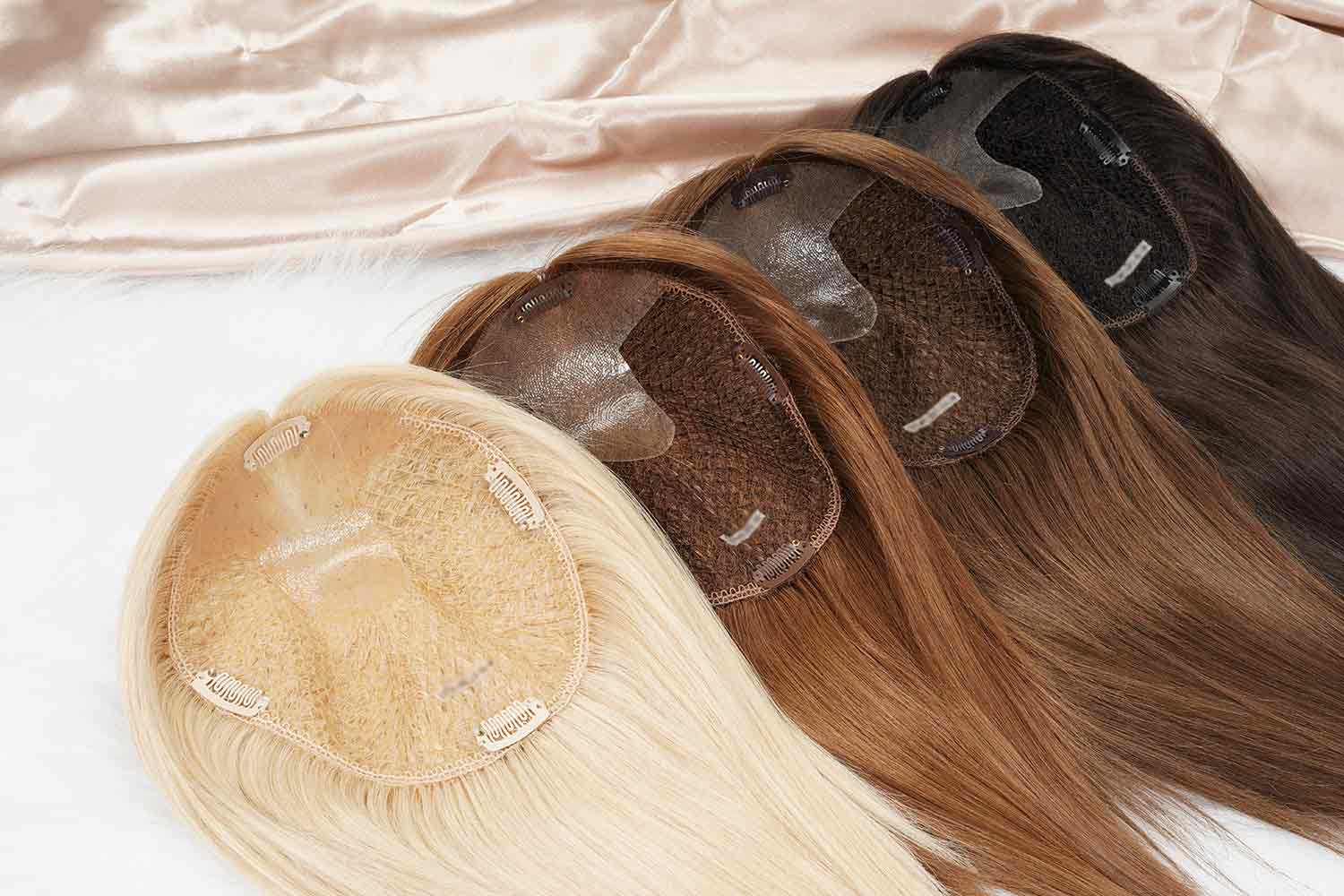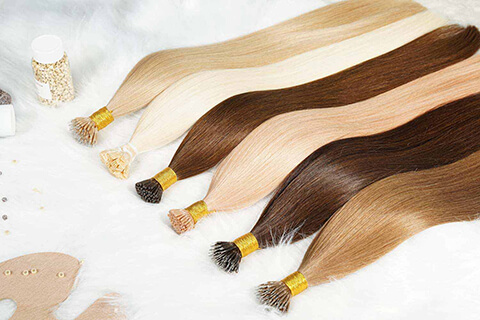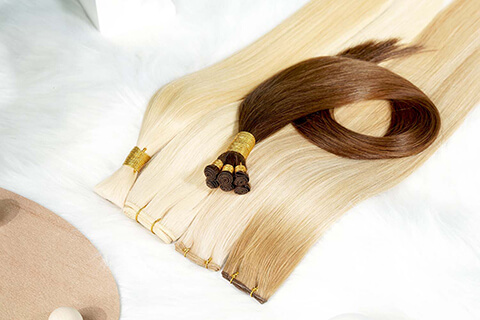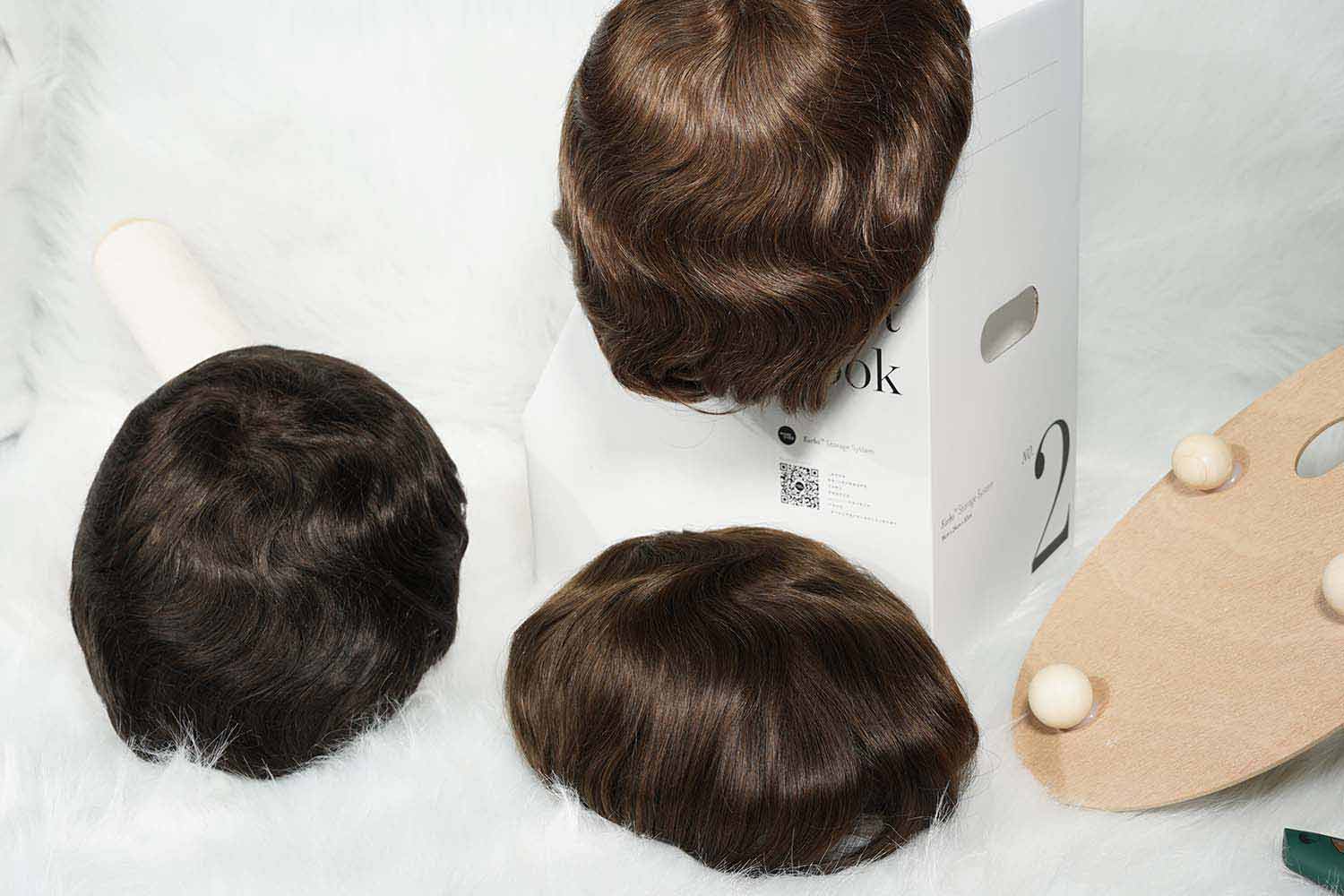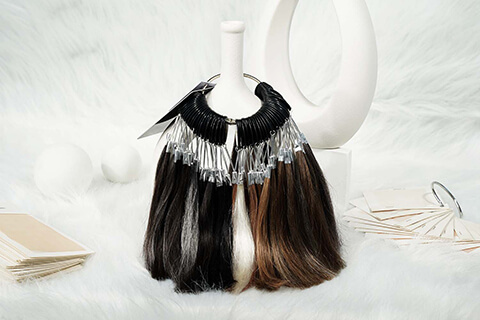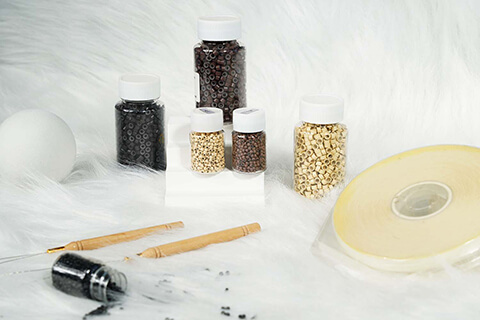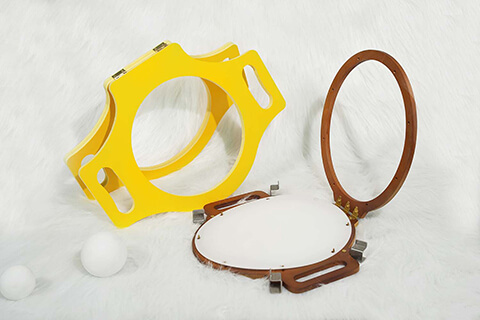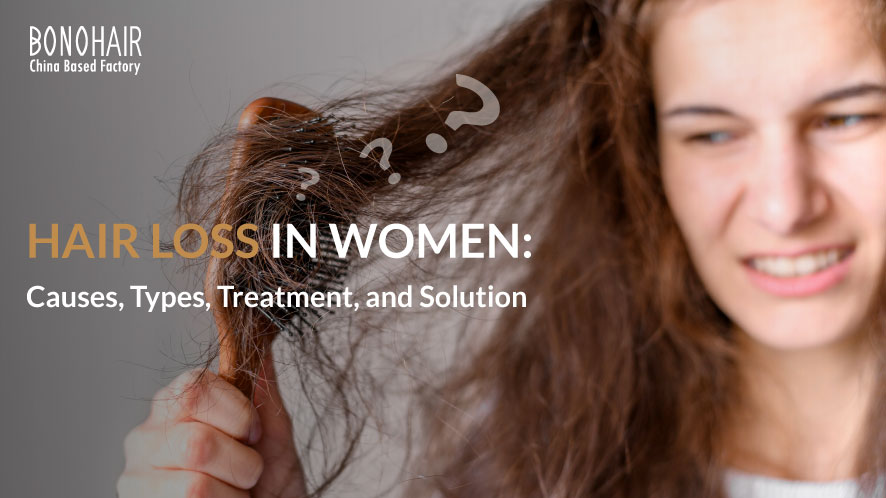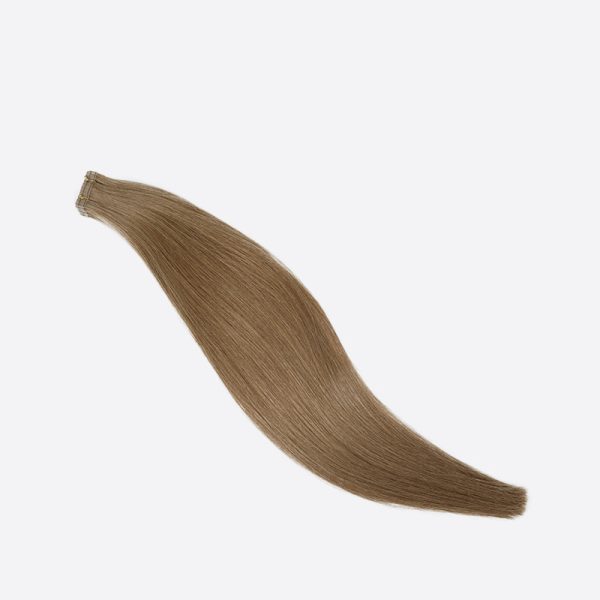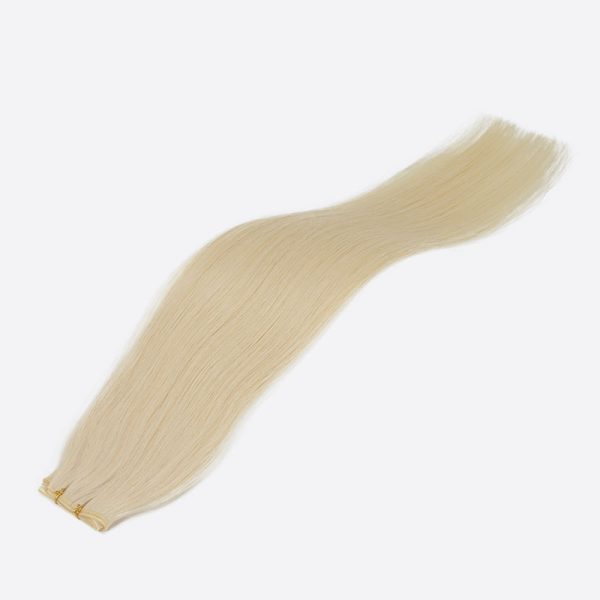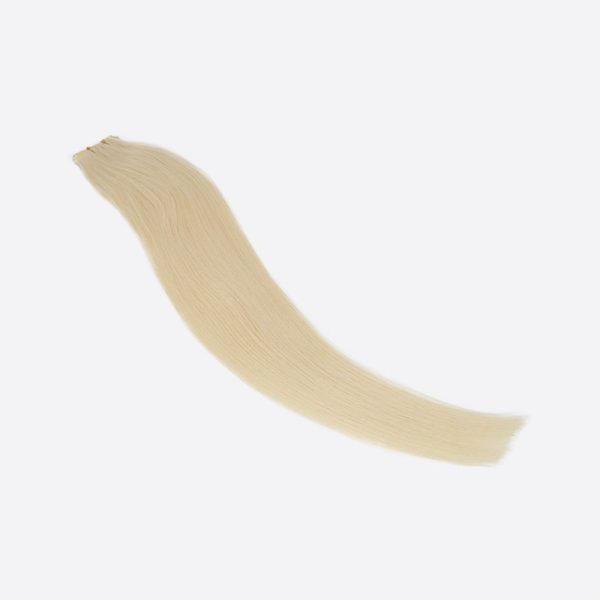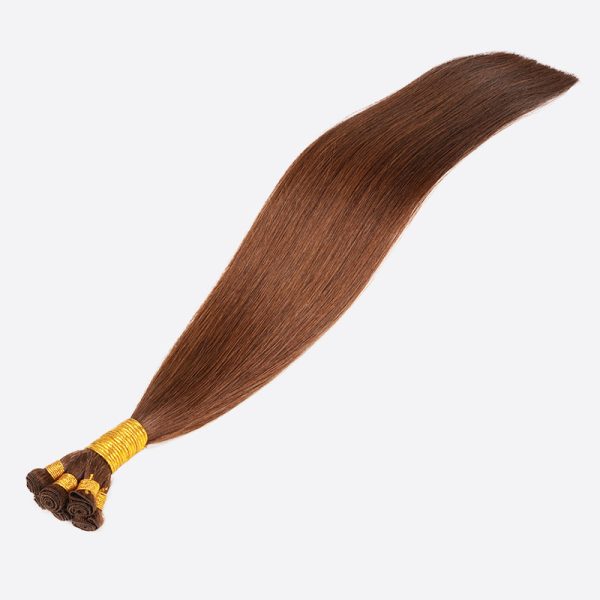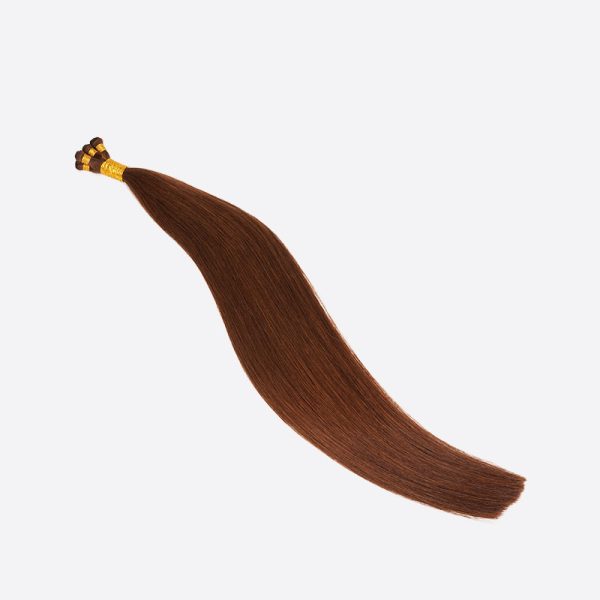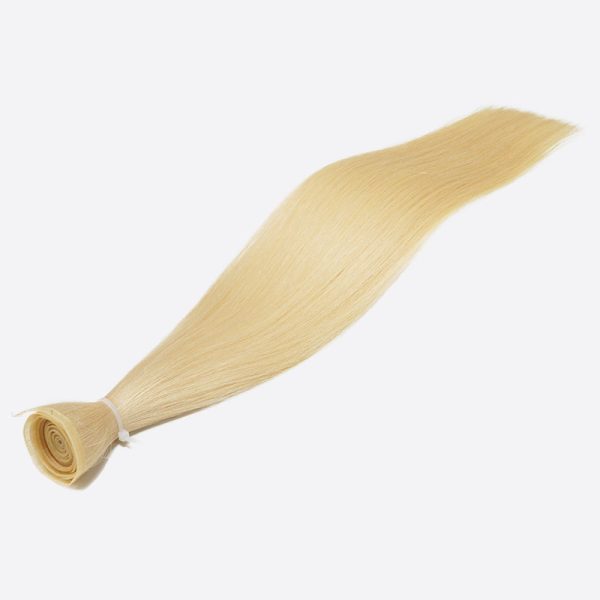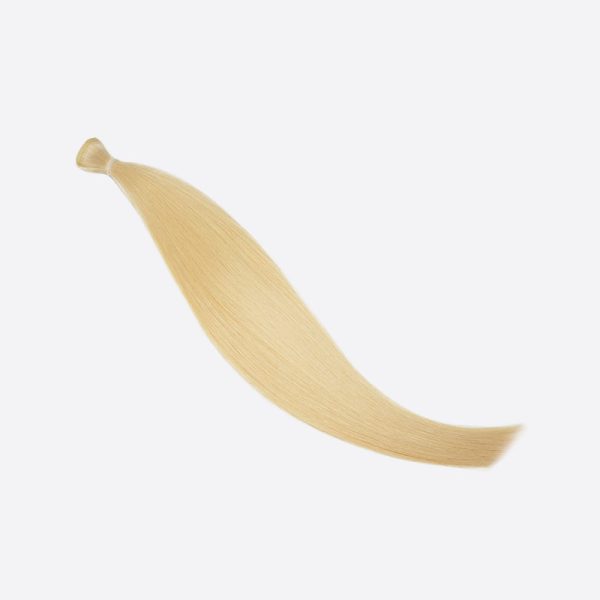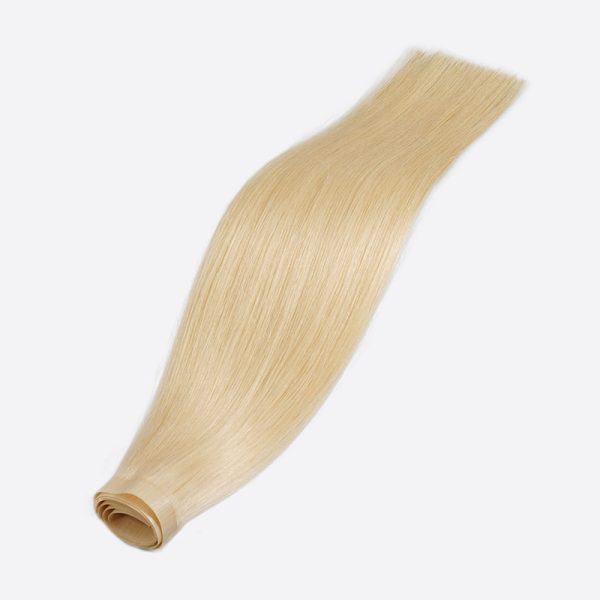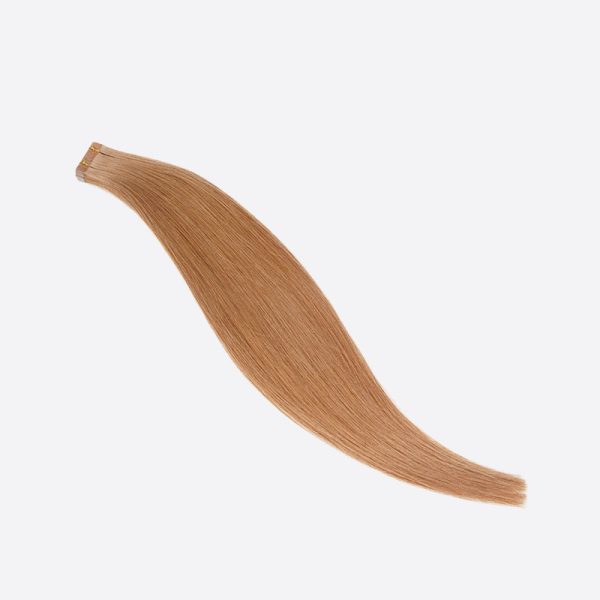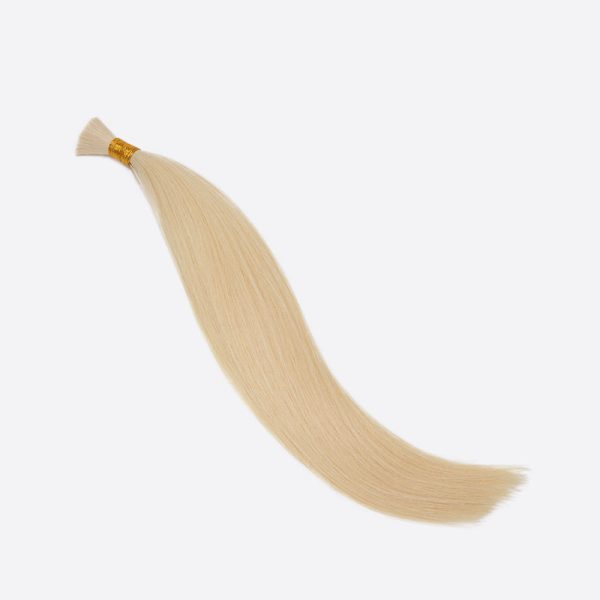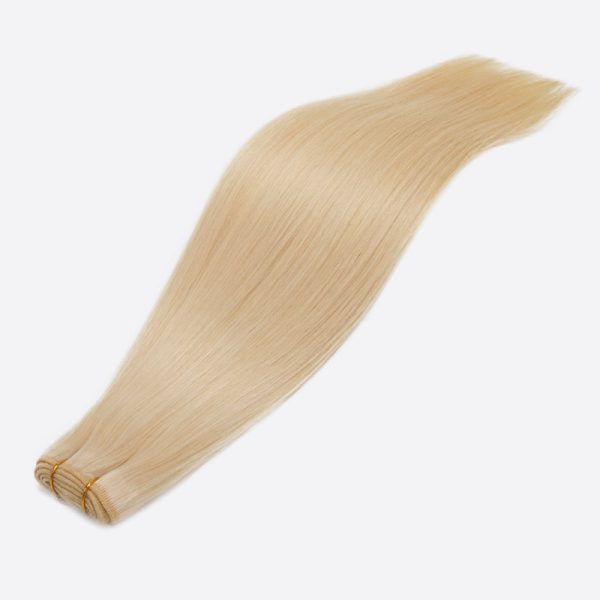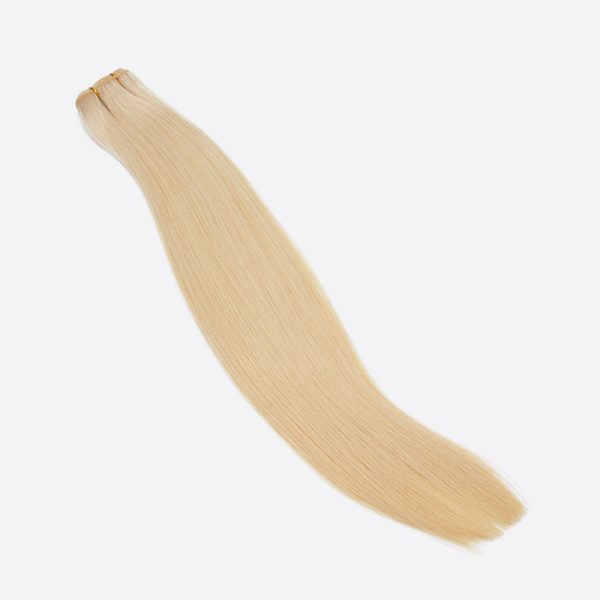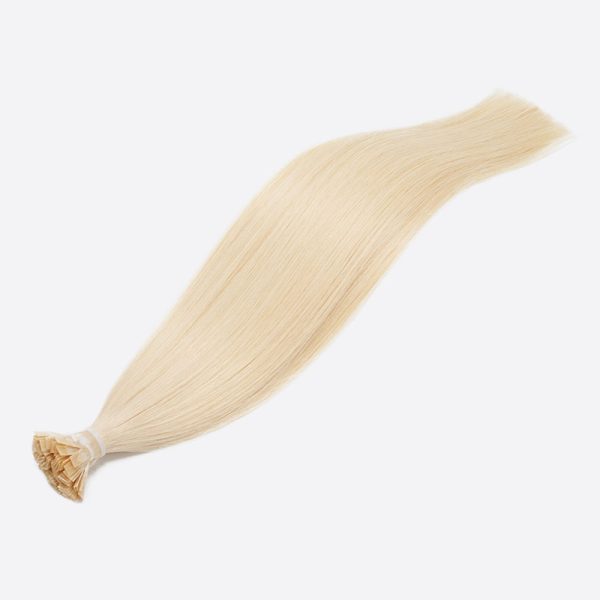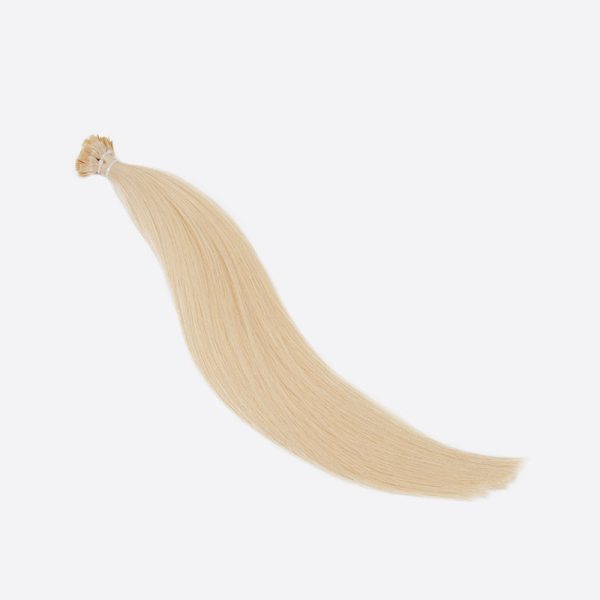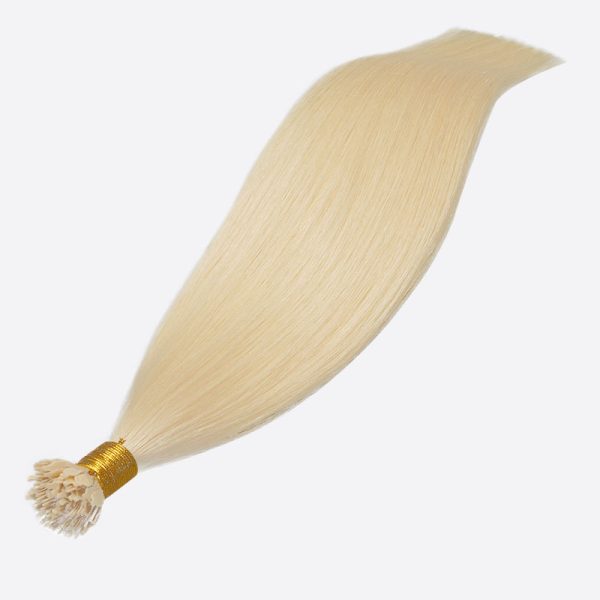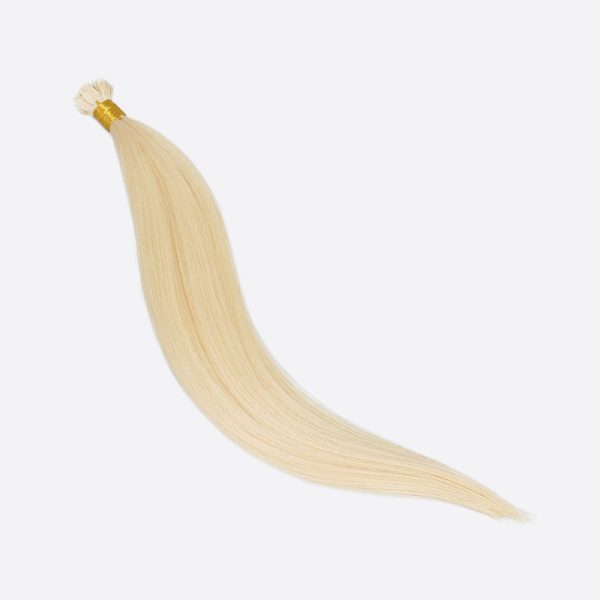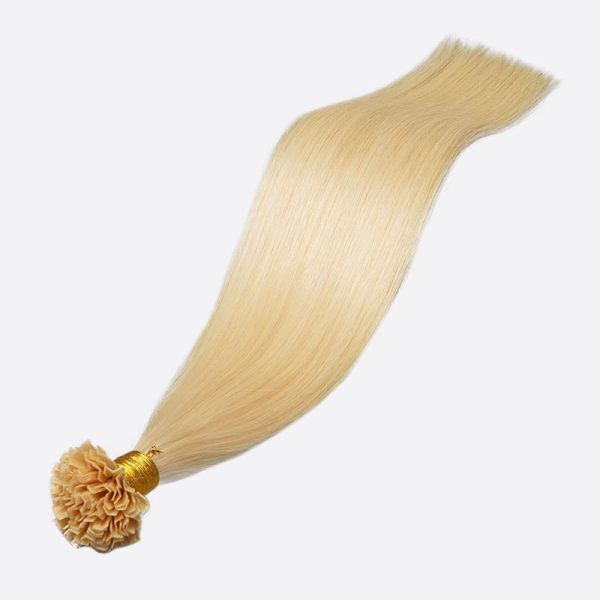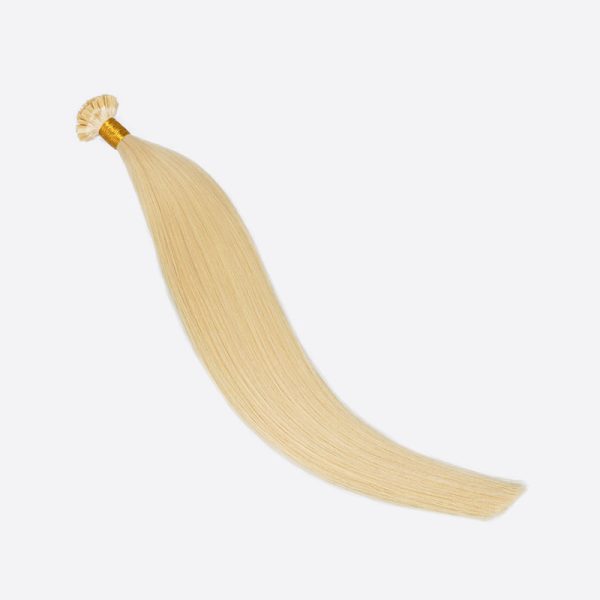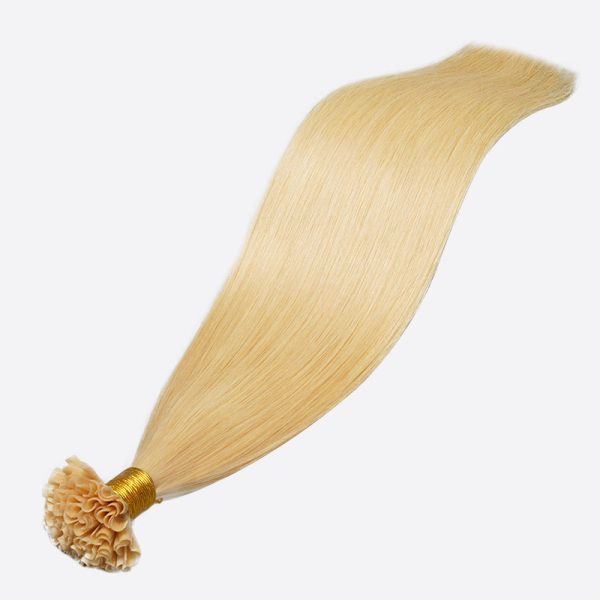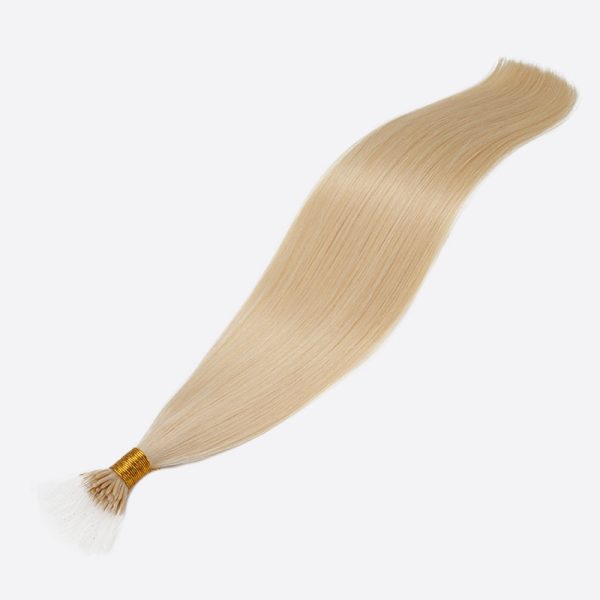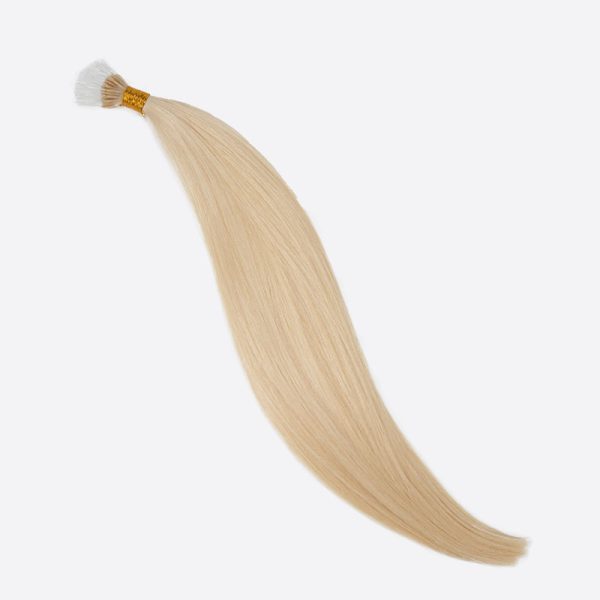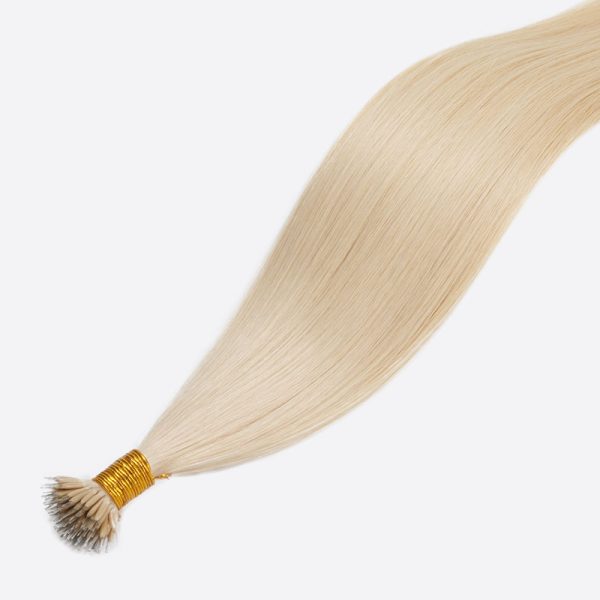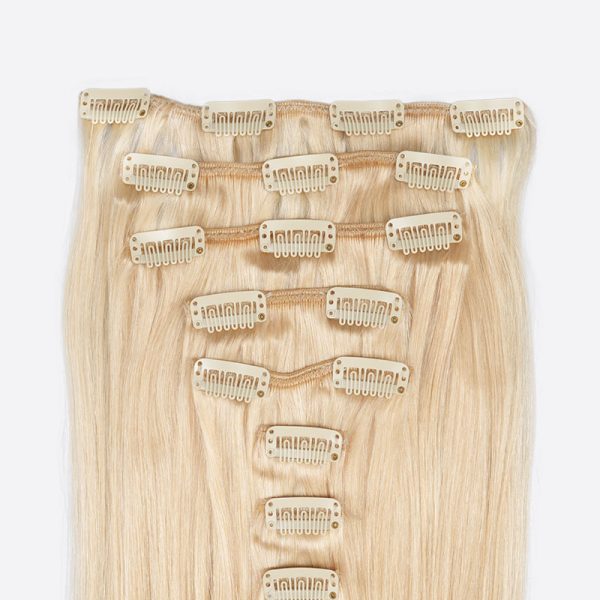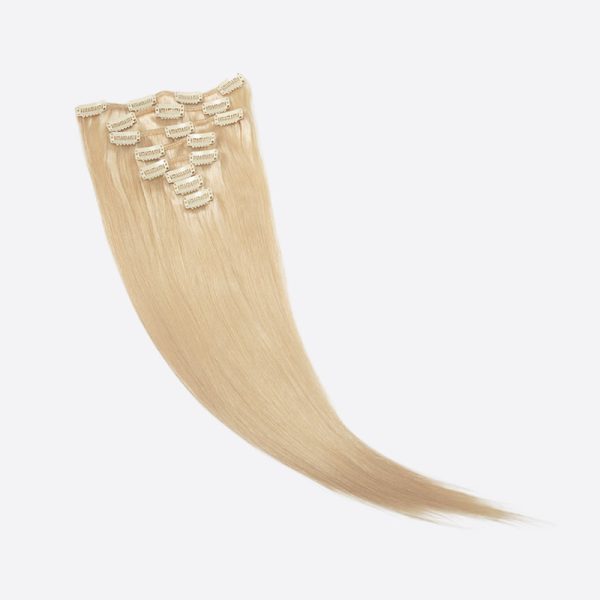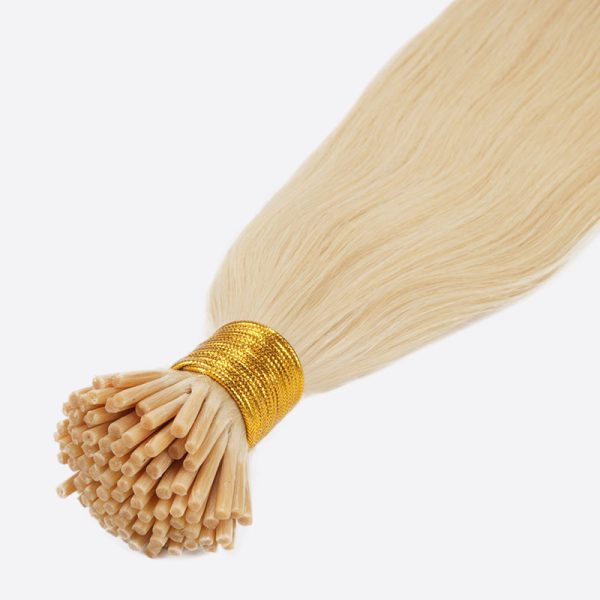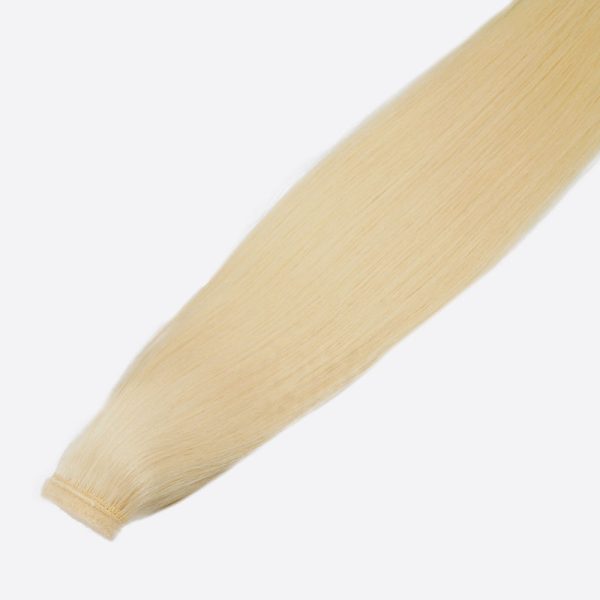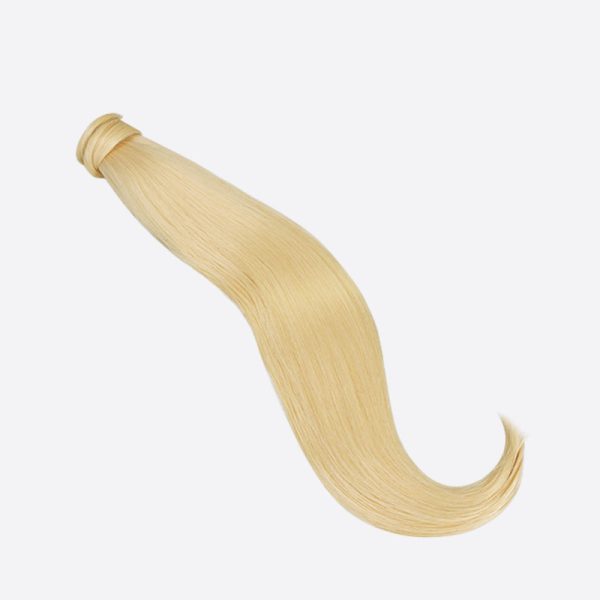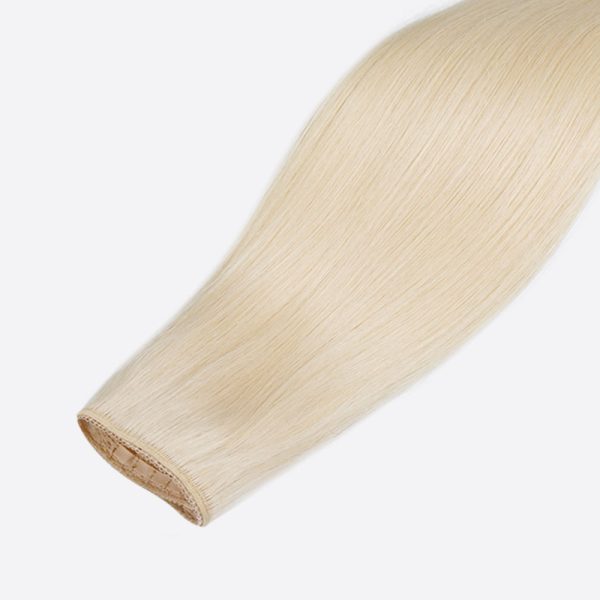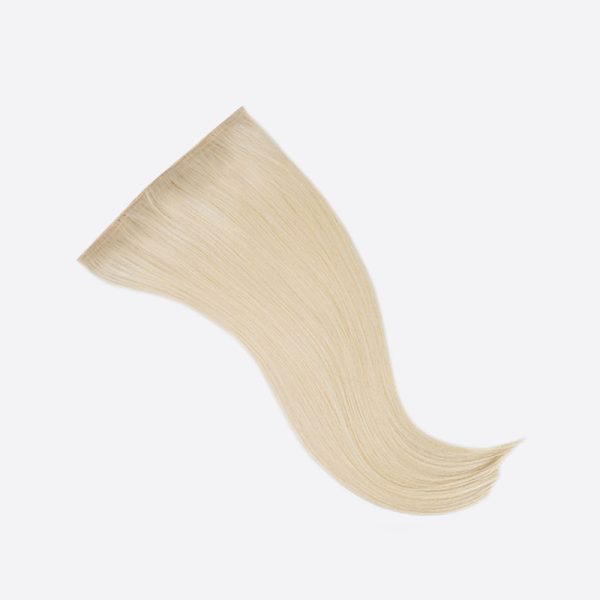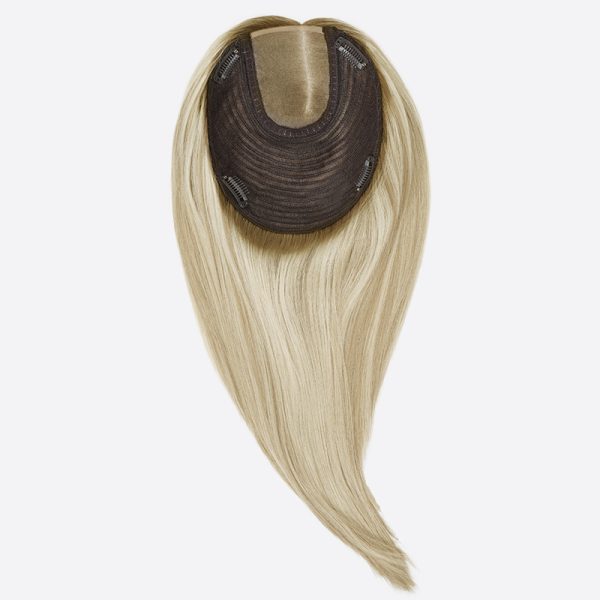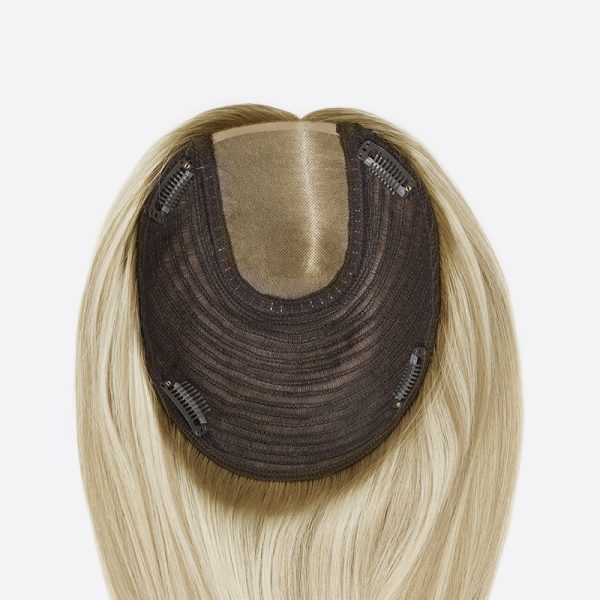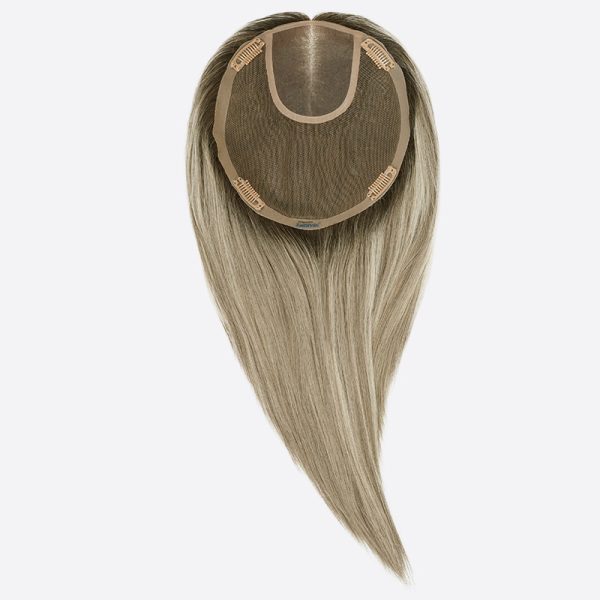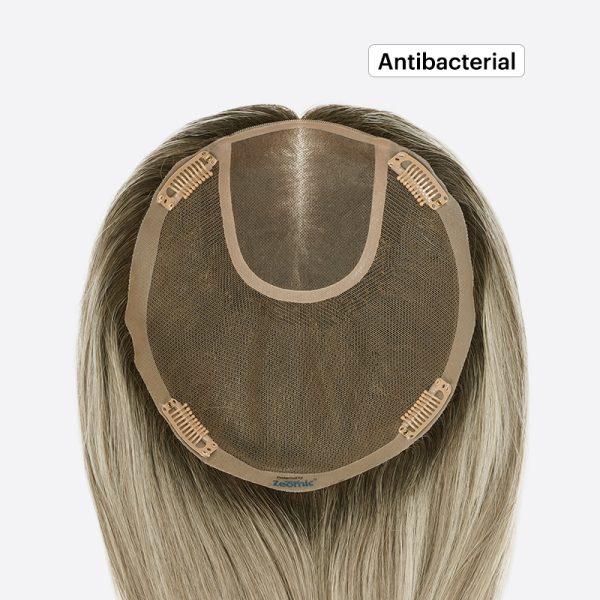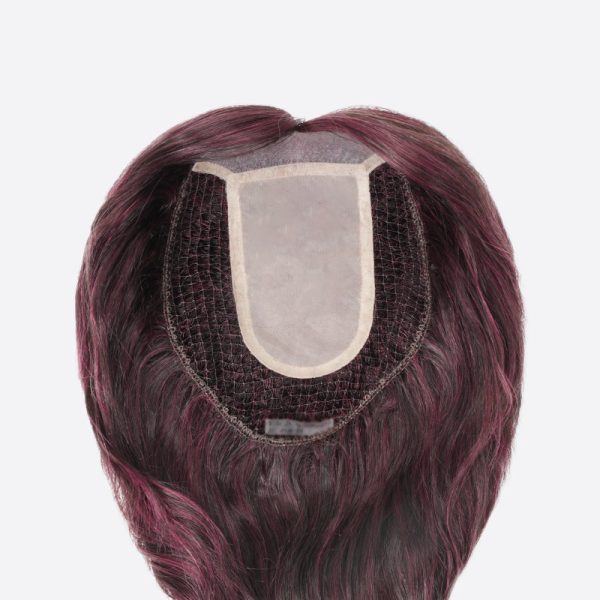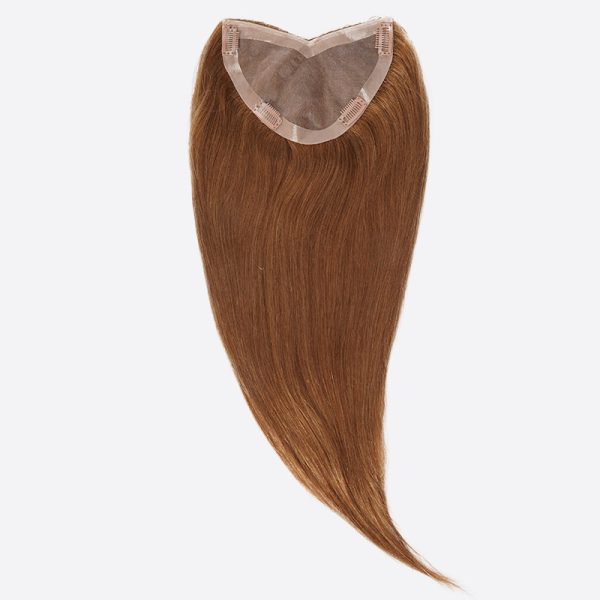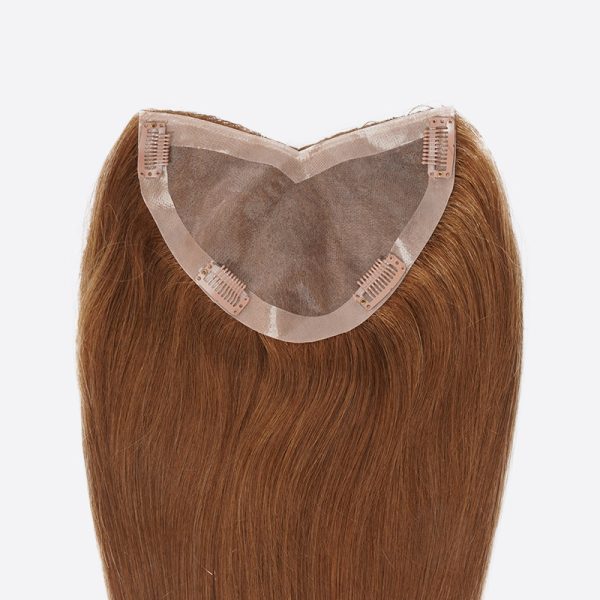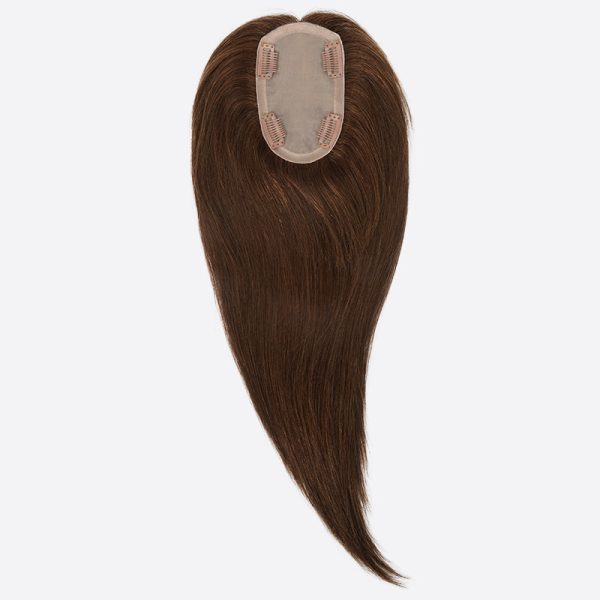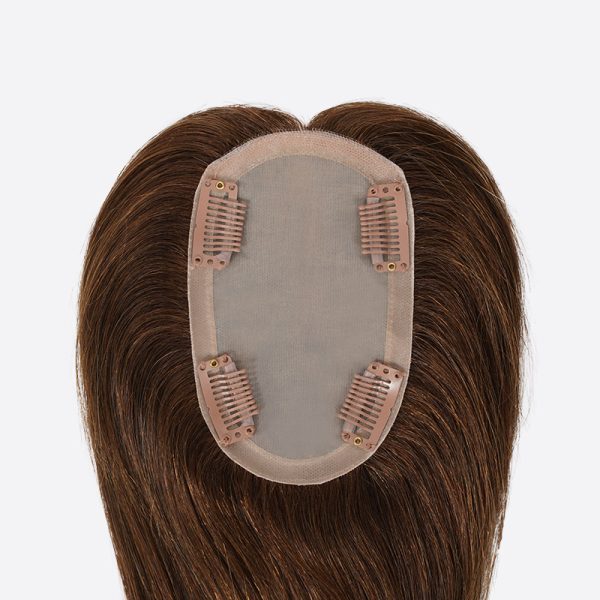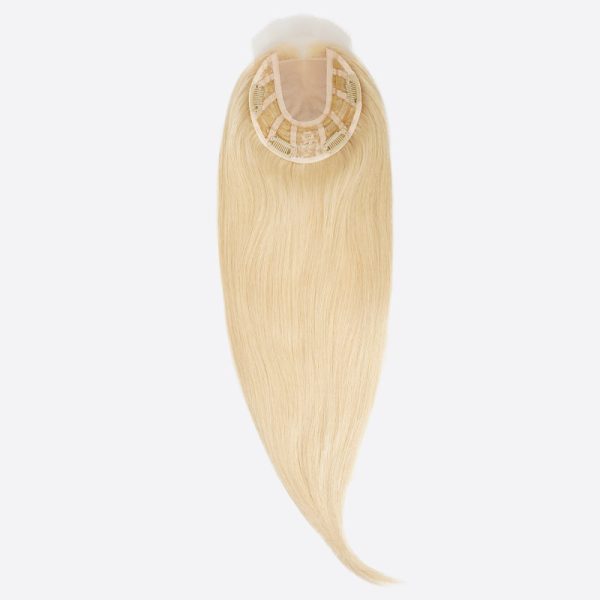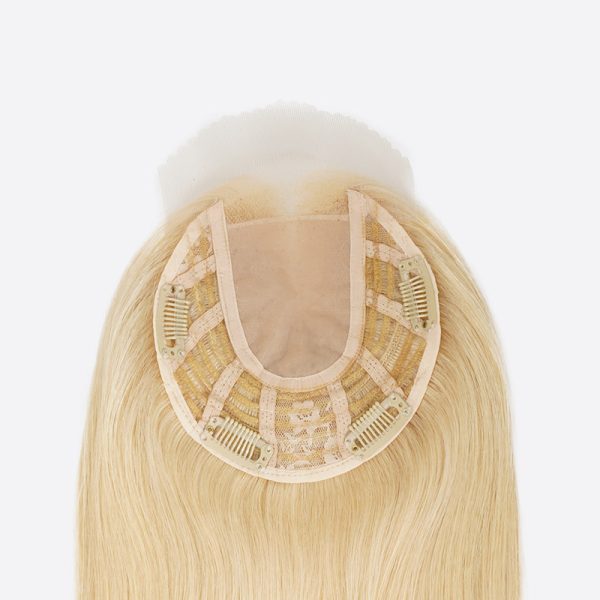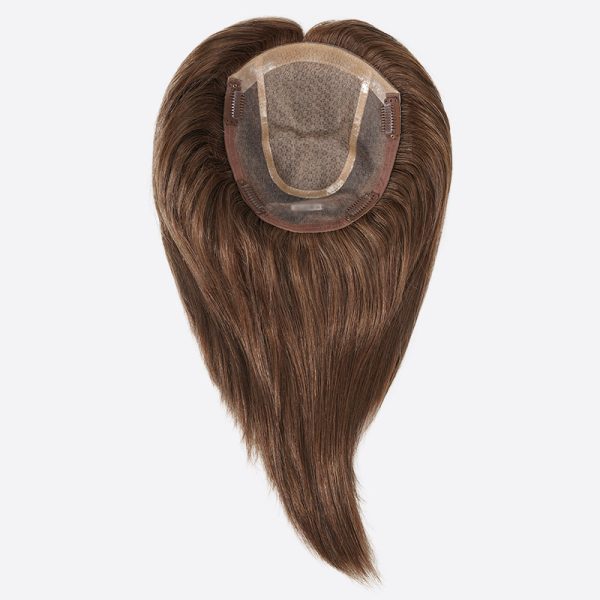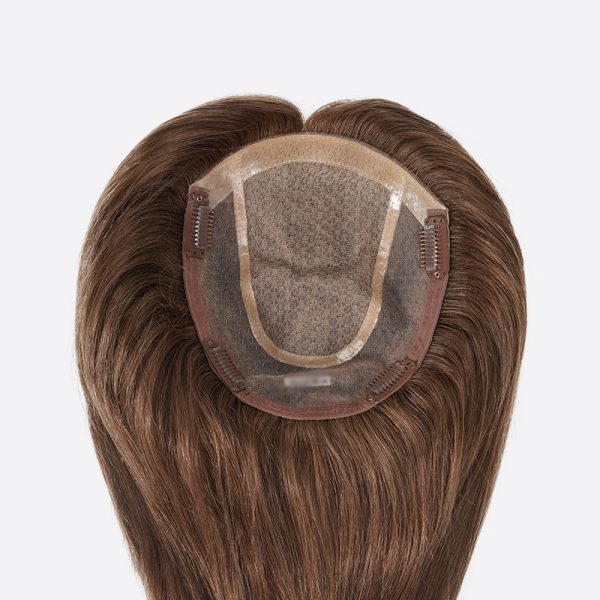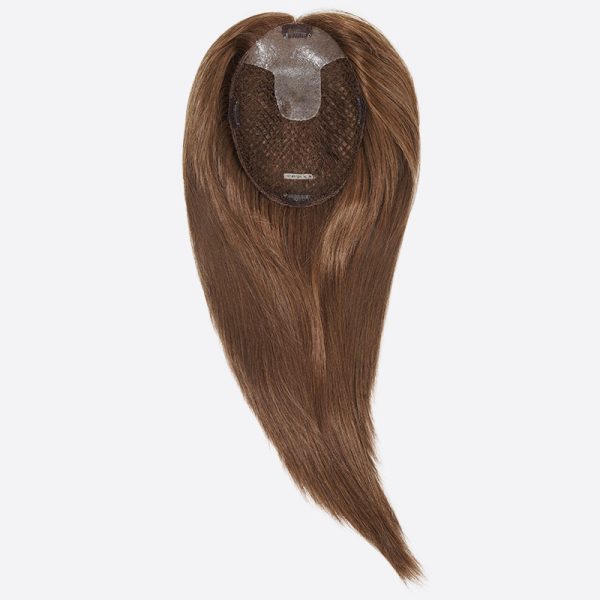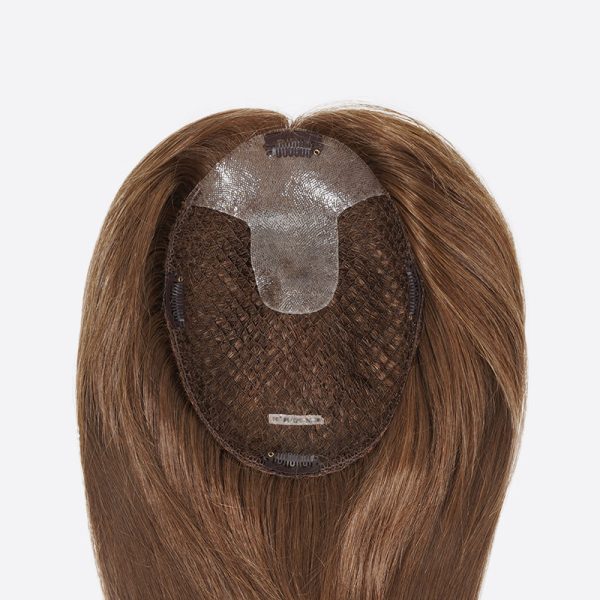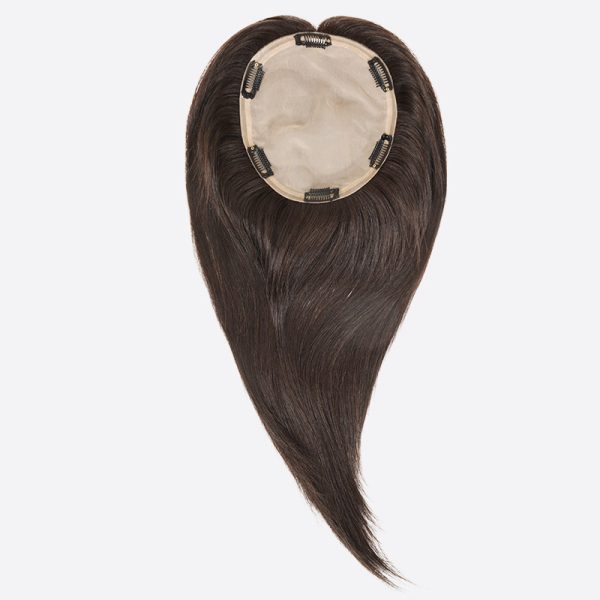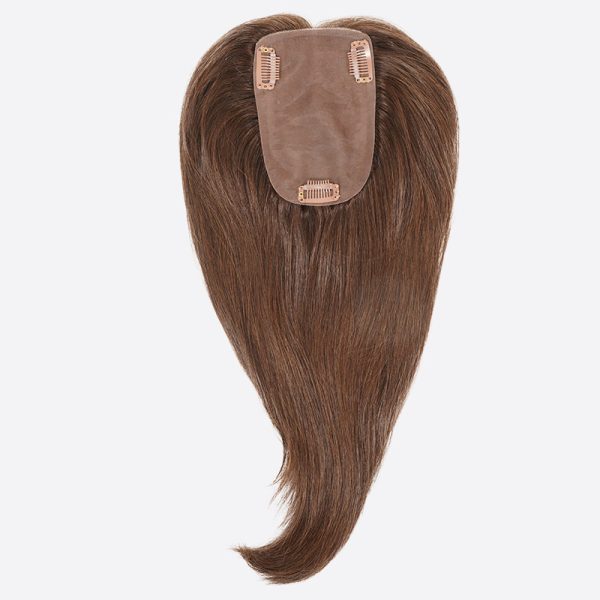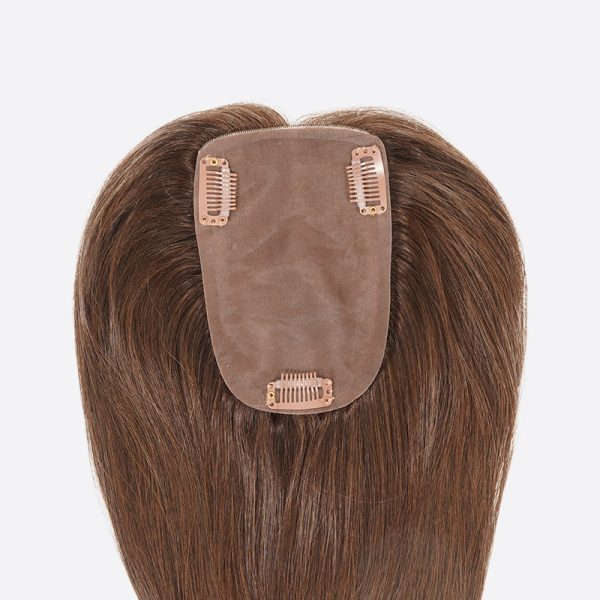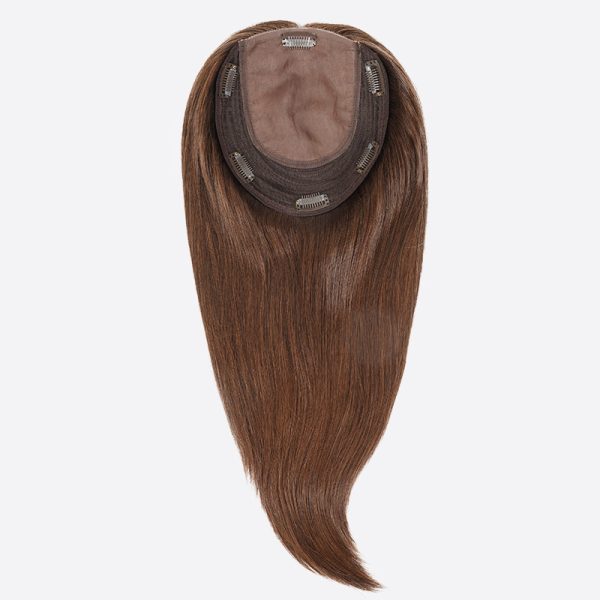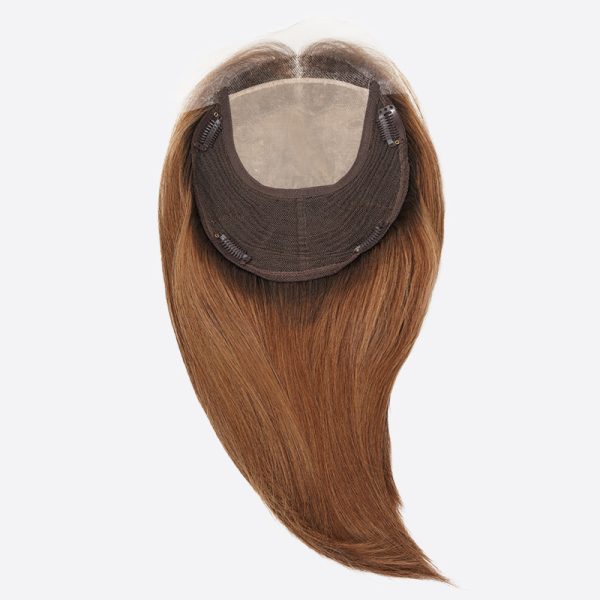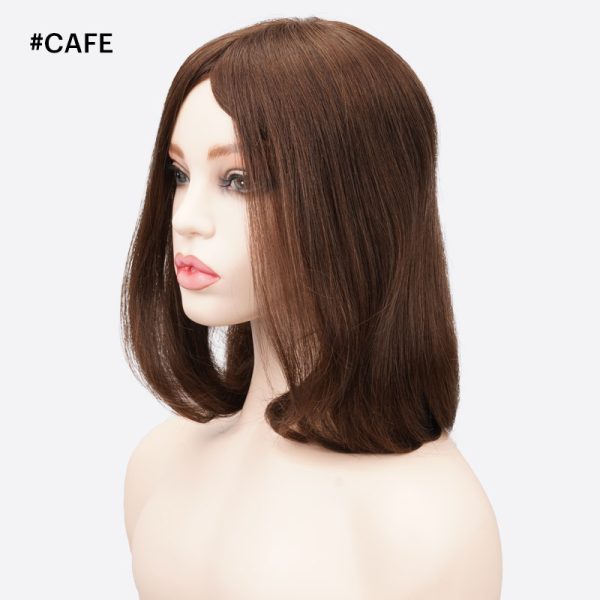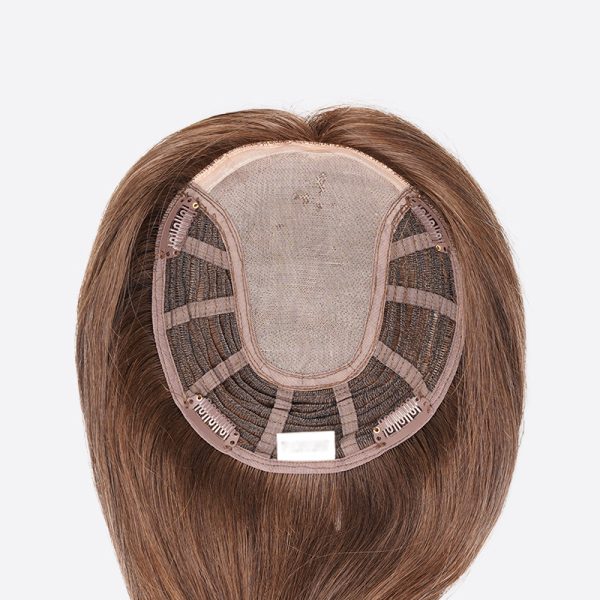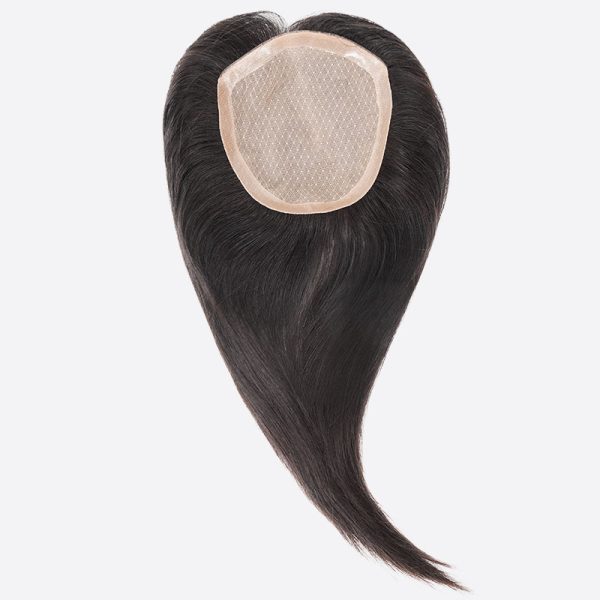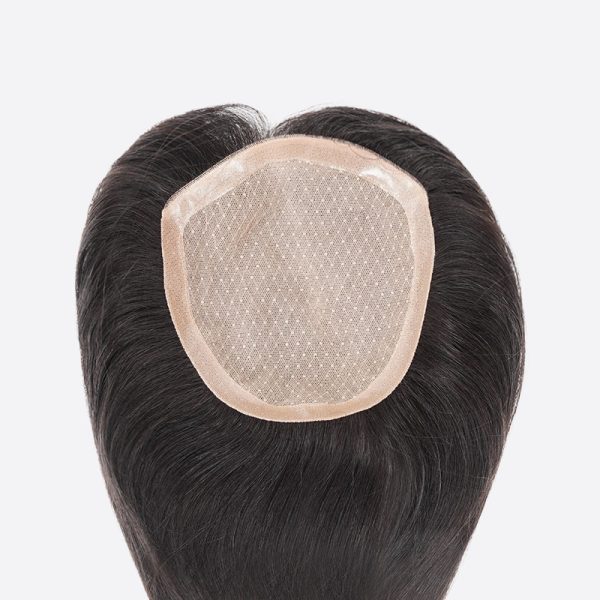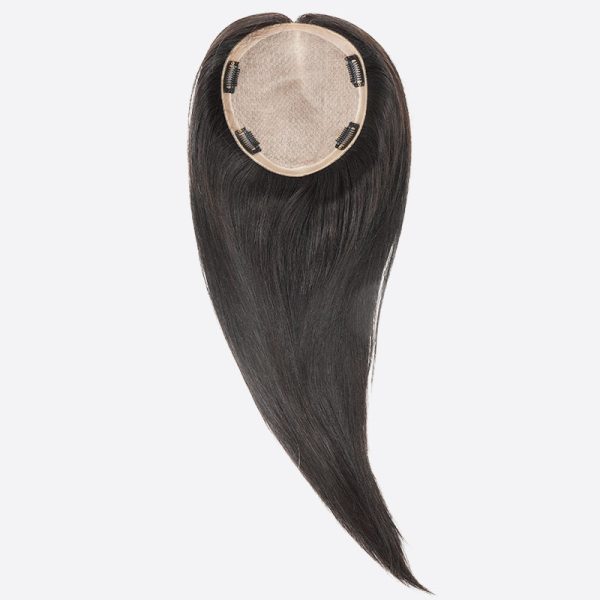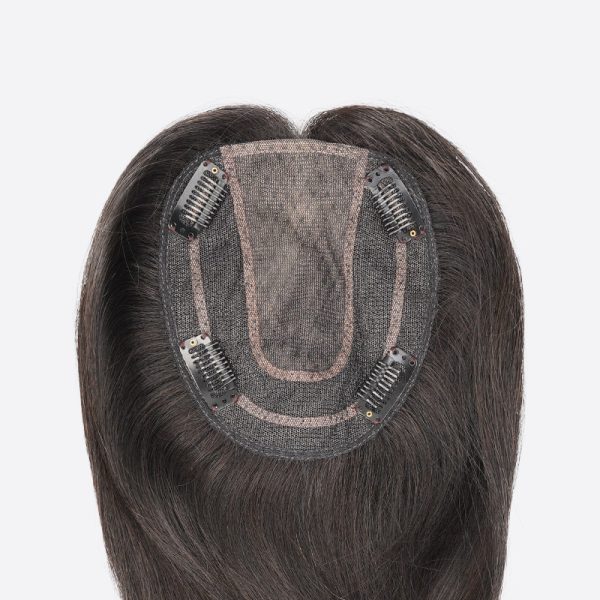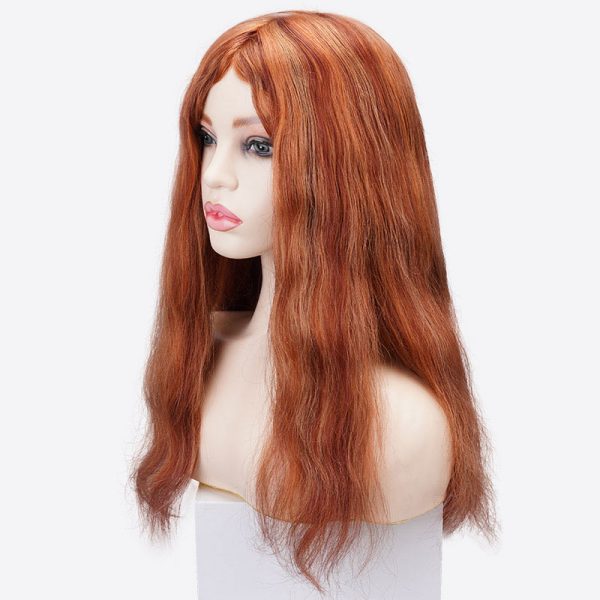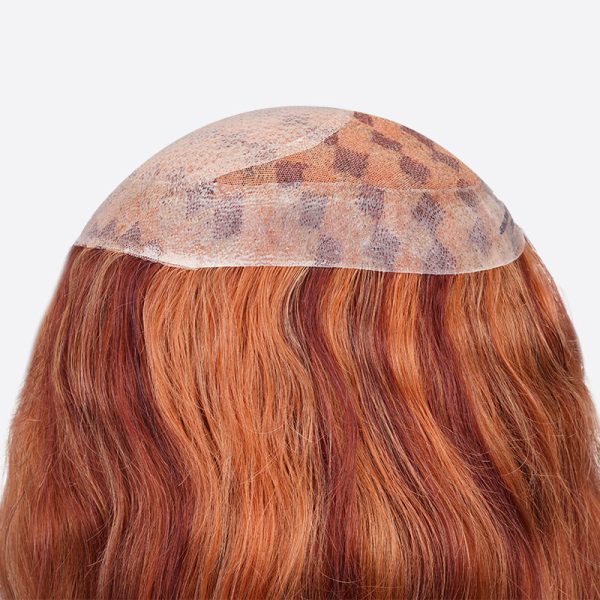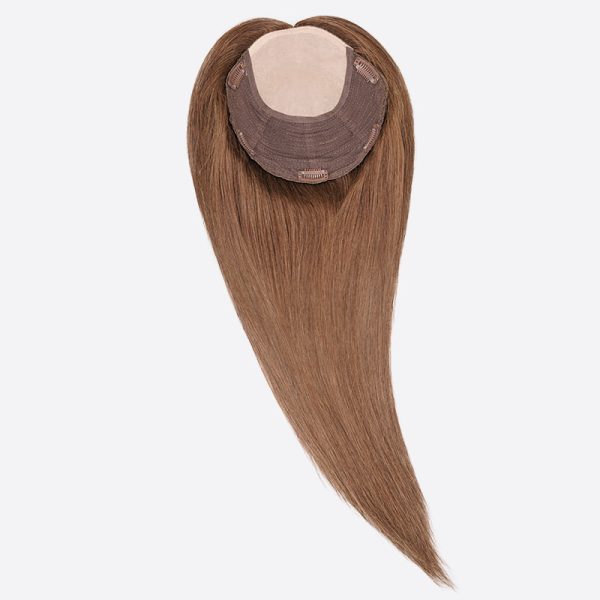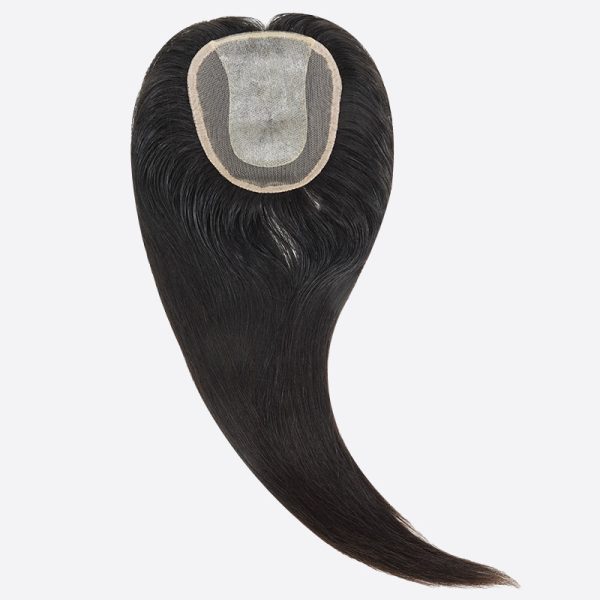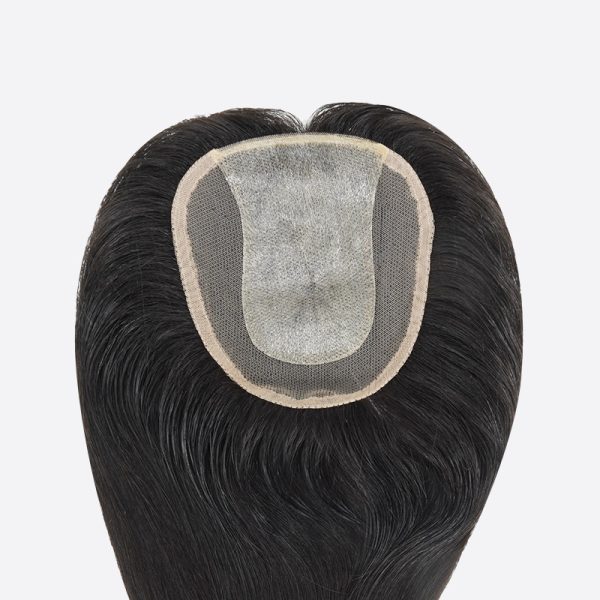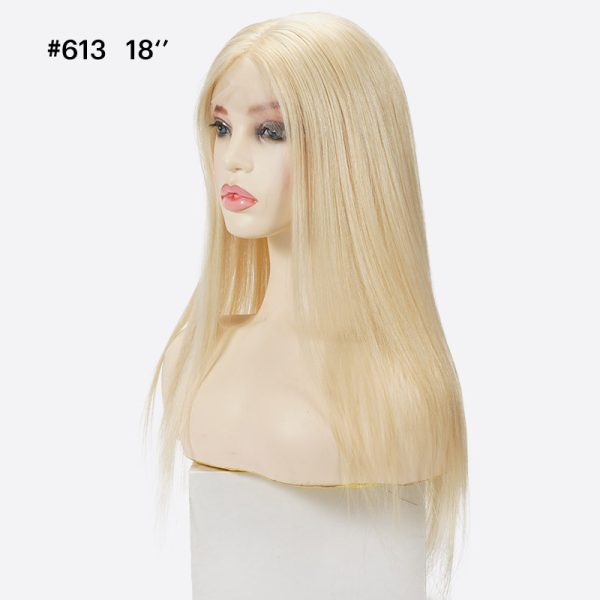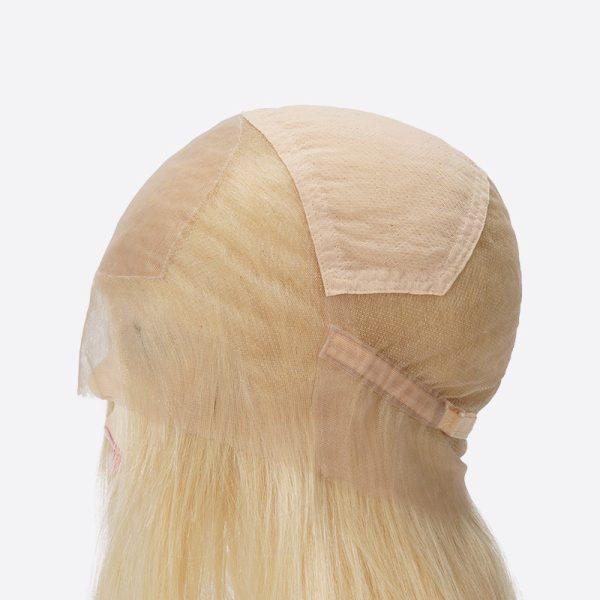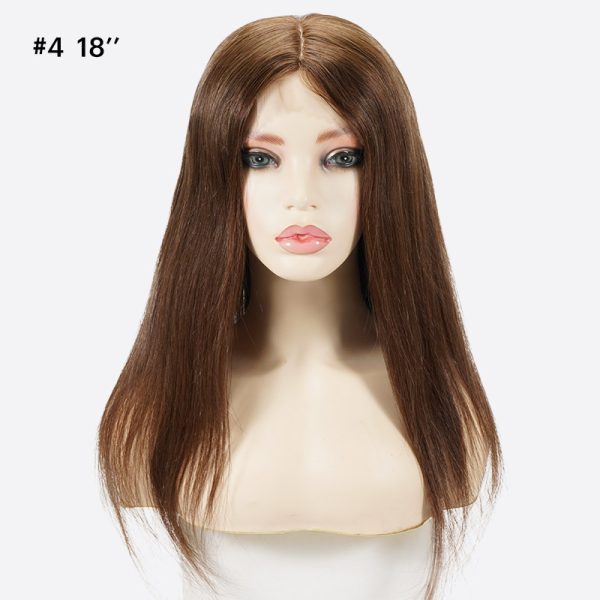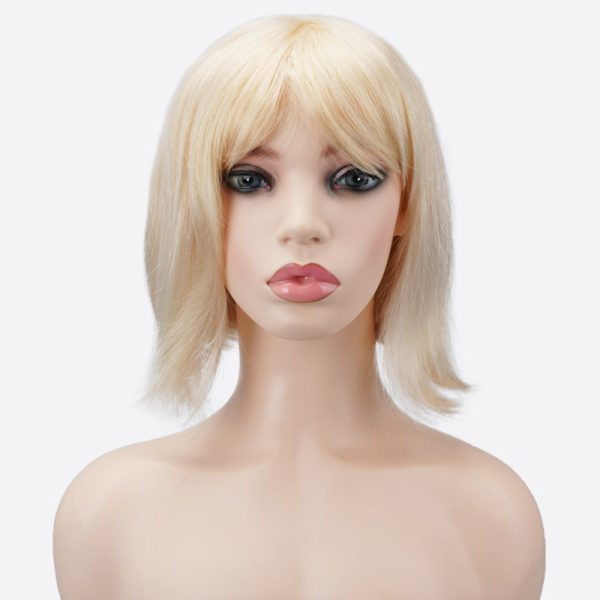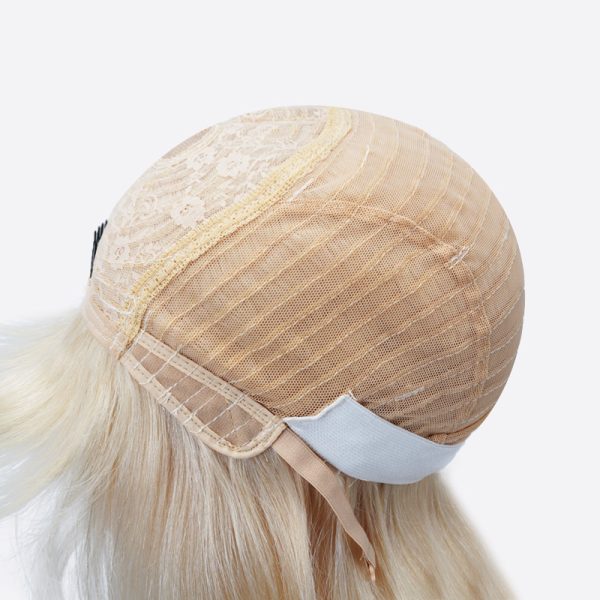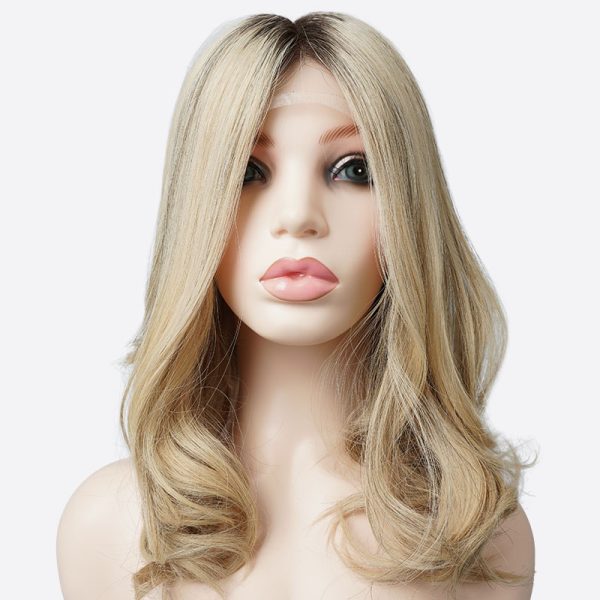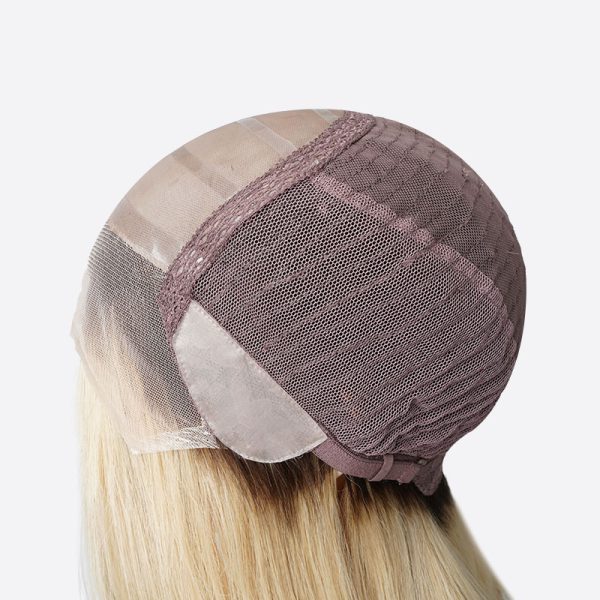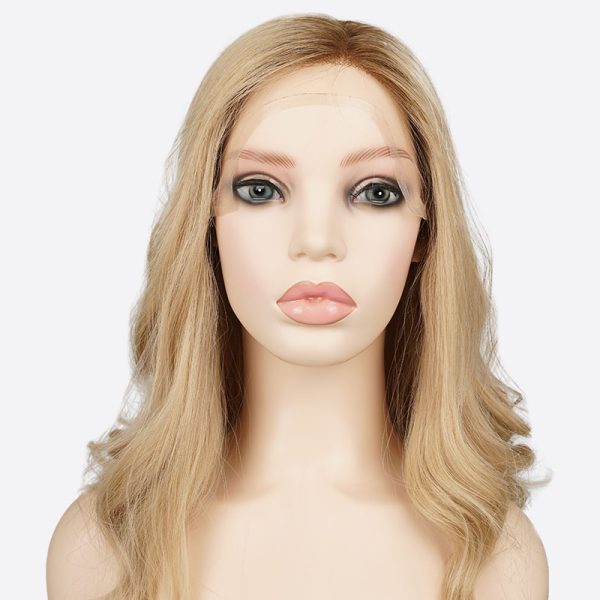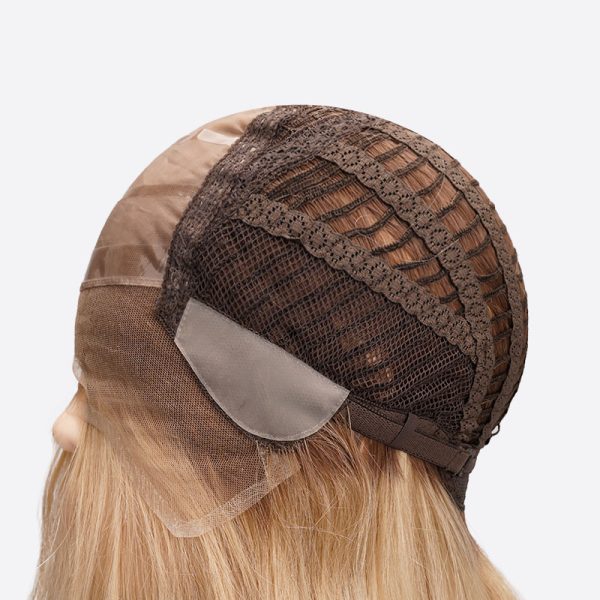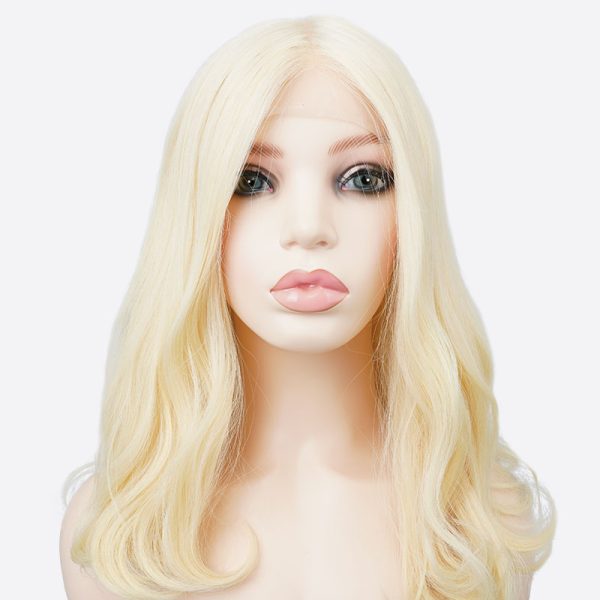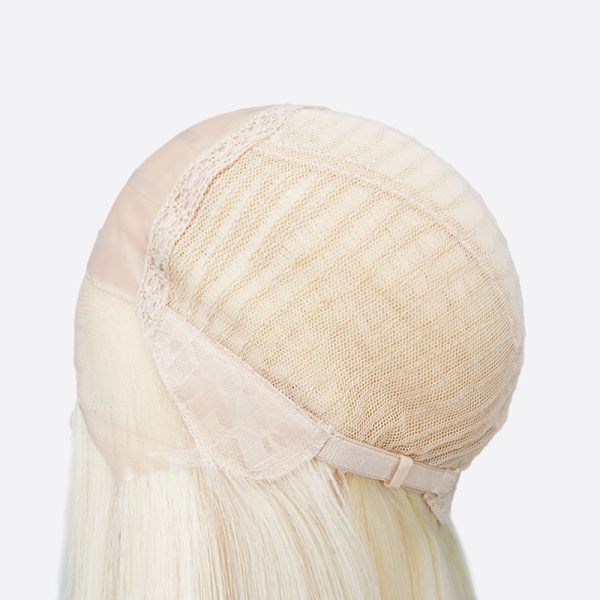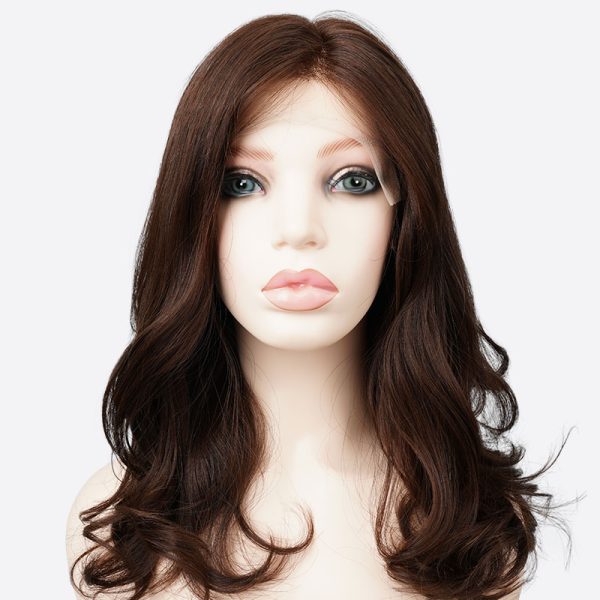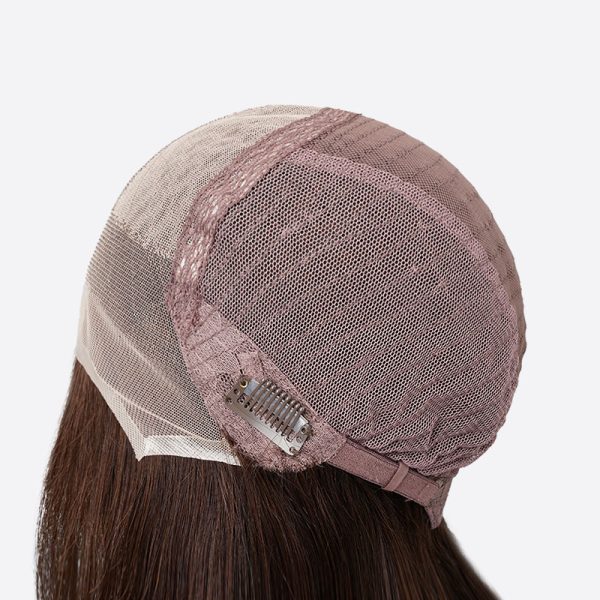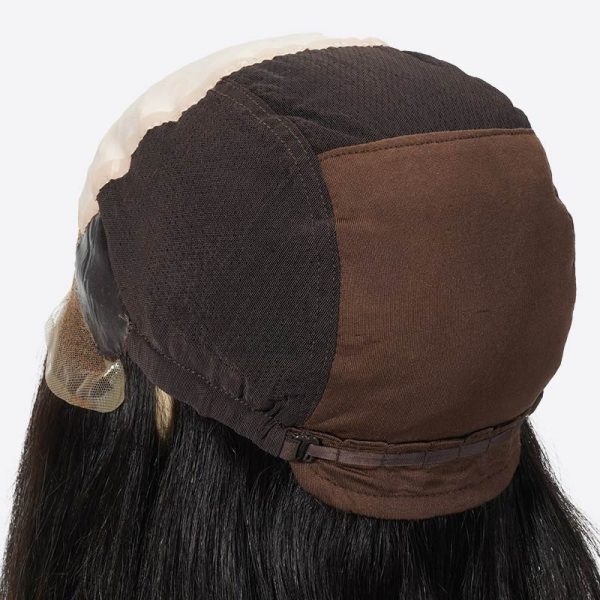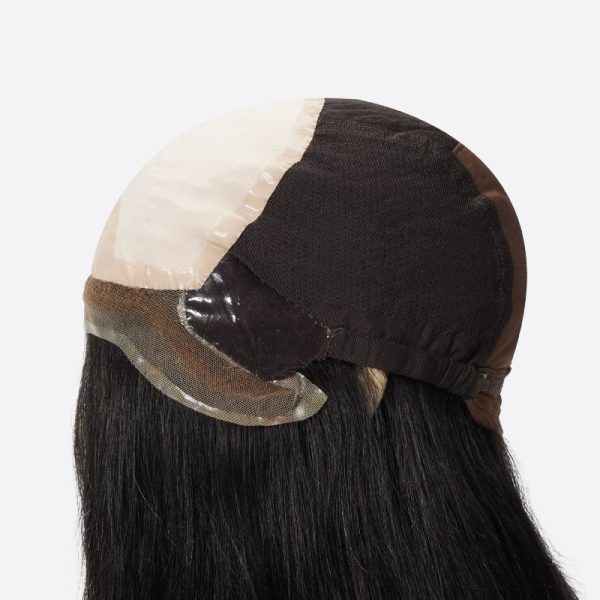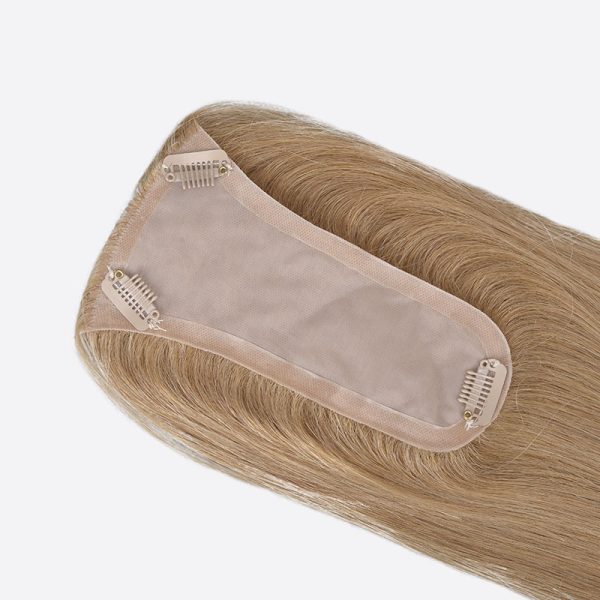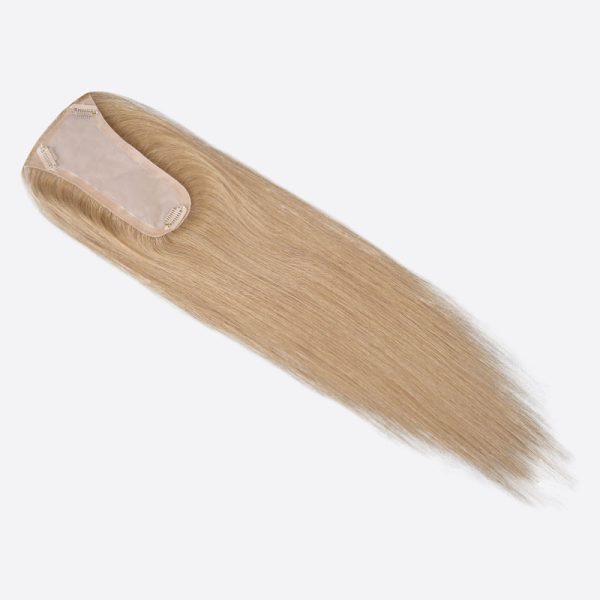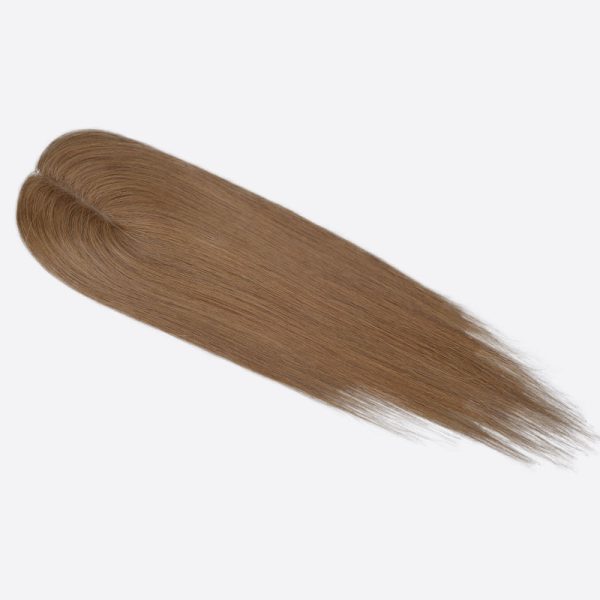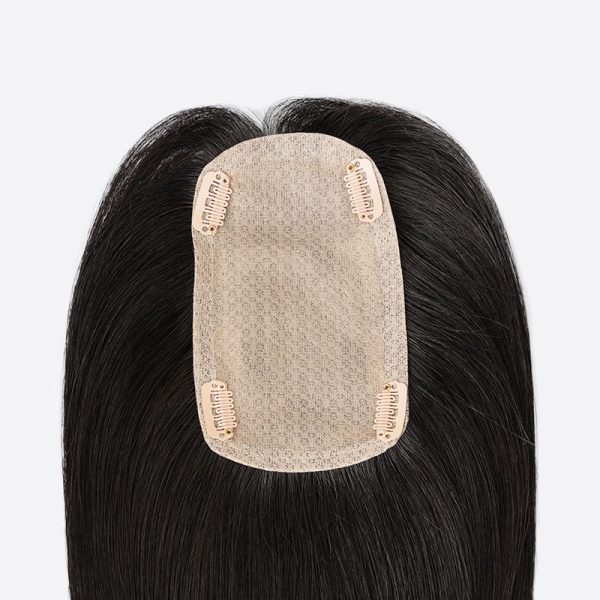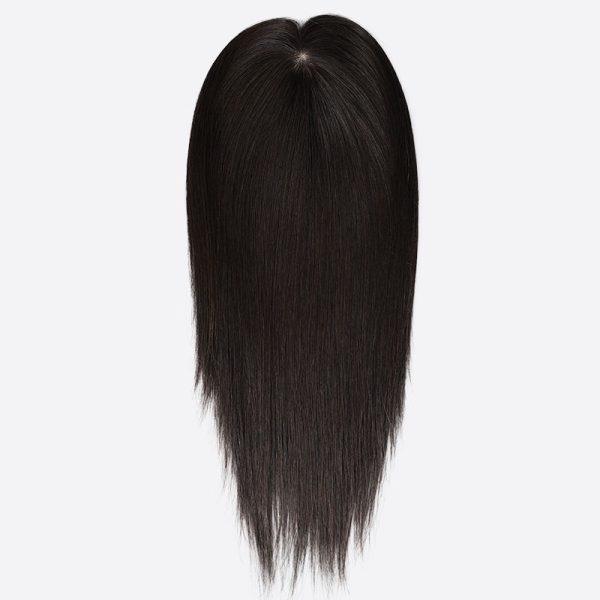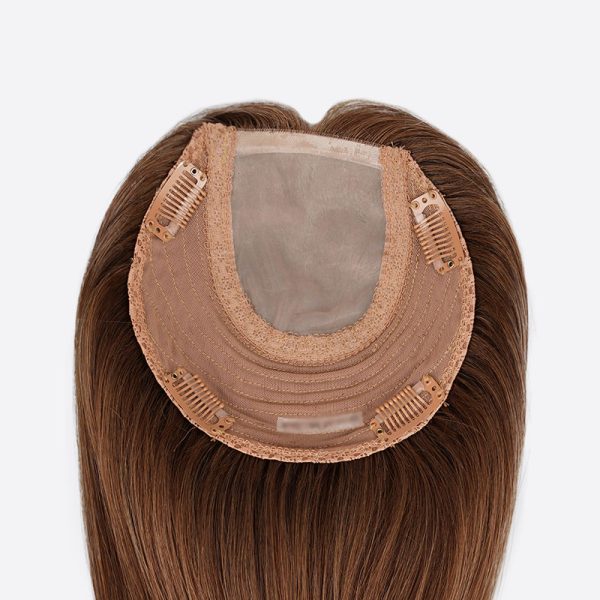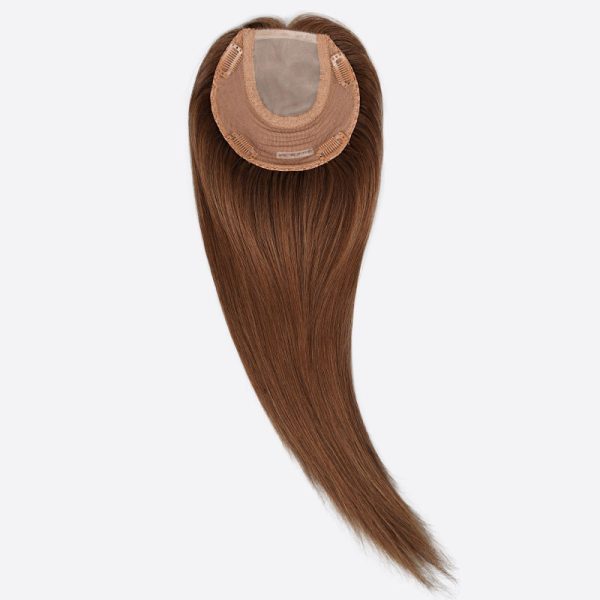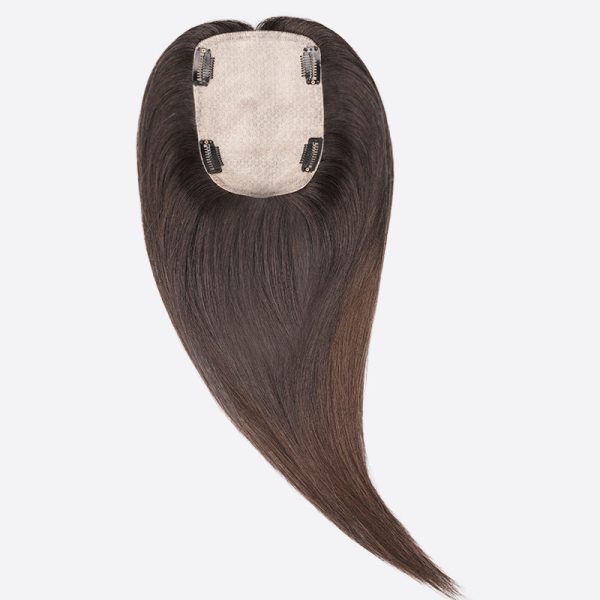Introduction
Are you seeing a lot of hair drowning in the sink lately?
Or finding huge hair clumps rolling on the floor?
Hair loss or hair thinning is indeed scary, especially when one does not even know the reason. The anxiety between finding the root cause of hair loss and the proper treatment often causes severe stress in sufferers, which further aids the hair falling process.
According to a national health survey, around eight million women in the UK suffer from hair loss which means hair thinning is pretty standard, and there is nothing to be ashamed about. However, one shouldn’t leave the elephant unaddressed as taking immediate action has proven to stop and even reverse hair thinning in some cases.
Since knowing the problem is half of the cure, let’s delve into the details of female hair loss without leaving any stone unturned in order to nib this evil in the bud.
What is Hair Loss In Women?

Hair is considered an essential part of one’s persona. Men are not exempted from the expectations; however, having good hair is even more critical for women. Society has set a typical beauty standard for women, and hair plays an integral part in qualifying for it.
A head full of hair, voluminous locks, or shiny hair always receives a lot of praise, approval, and attention, which is why women want to maintain healthy hair.
Some women are born with good hair – lucky them, while others have to put an effort in order to keep their hair shiny and well-maintained. Stress, medical conditions, or unhealthy lifestyles make hair prone to breakage and damage. The hair loses its elasticity and falls off from the roots. However, the real problem starts when the hair does not grow back.
It is absolutely normal to shed approximately 80 to 100 strands a day, this is a part of the normal hair cycle, and there is nothing to be concerned about. The average hair shedding may become more noticeable during the fall season or when a person undergoes some kind of stress, and this cannot be concluded as hair loss. New hair starts to regrow immediately after the old hair falls off.
Hair loss is when a person starts losing hair, and new hair does not appear after many days, making the hair loss or hair thinning obvious. When new hair does not regrow, bald patches start to appear on the head, which may or may not lead to complete balding depending upon the course of action and the root cause of hair loss.
Hair loss is twice as common in men as it is in women, yet women are more scared of it. For men, there seems to be an unsaid acceptance in society for hair loss or even balding, whereas women are expected to meet beauty standards and have a head full of gorgeous hair throughout life.
Which Women are More Likely to Observe Hair Thinning?
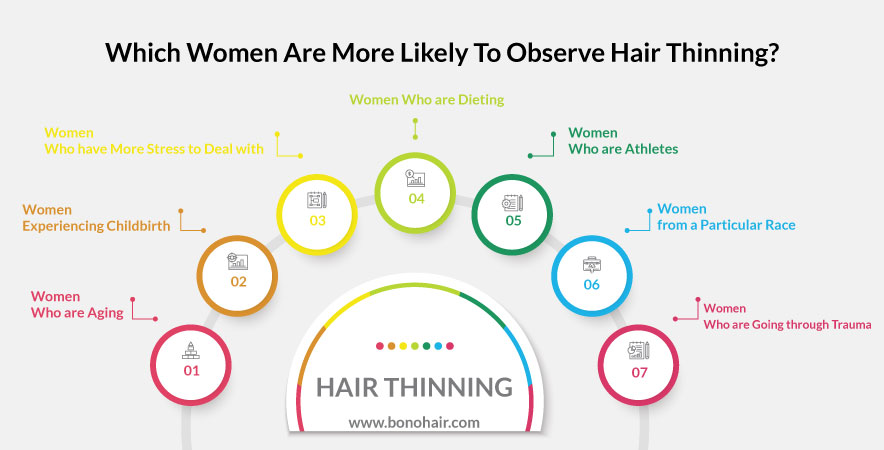
The associated social stigma attached to female hair loss embarrasses women, and most women do not like to talk about it, which leads to unawareness. If women know about the circumstances or phases of life that can expose them to experiencing hair loss, they may prepare better.
The emotional trouble surrounding hair loss can be efficiently dealt with, provided the sufferer is mentally prepared for this temporary hair loss.
Certain factors make some females more prone to hair loss.
● Women Who are Aging
One of the main contributing factors is age, so women closer to their forties may experience more hair loss than females in their twenties. Aging slows down cellular growth and repairing processes inside the body, so the hair regrowth cycle also starts to die down.
● Women Experiencing Childbirth
Women who are about to give birth or have just had babies shall also prepare to experience hair loss at one point in this crucial journey. So women who are in their childbearing phase can expect more hair loss than those who are either past this phase or have not entered it.
● Women Who Have More Stress to Deal With

Women who have strenuous routines or double burdens, in short, women who undergo more stress daily, are ultimately more prone to hair loss or hair thinning than those experiencing mild to moderate levels of stress or exhaustion.
● Women Who are Dieting
Restricted nutrition intake leads to hair loss in females, so women on a diet may experience hair loss. Women who are anorexic, anemic, or bulimic have a higher chance of experiencing hair thinning than women who maintain a healthy diet. Having healthy hair requires a woman to eat a balanced and healthy diet. Dieting robs the body of essential vitamins, minerals, and good fats, which trigger hair loss in the long run.
● Women Who are Athletes
Athletic pieces of training require women to maintain a specific body fat level and eat a certain type of food. Extensive workouts and training may trigger hair loss in female athletes. Women who go to the gym and perform heavy workouts or weight-lifting may also experience hair thinning.
● Women From a Particular Race

Some races like Caucasians and Afro-Caribbeans are more susceptible to hair loss. Females who belong to these races thus are more prone to experience hair loss than those who belong to other races.
● Women Who are Going Through Trauma
Any trauma that is too extreme to handle, such as the death of a loved one, loss of job, domestic issues, or accident, can trigger hair loss in females. The shock after trauma affects overall physical and emotional health, but the symptoms may appear on hair more than any other body part. So women experiencing trauma are more likely to suffer from hair loss.
What is FPHL (Female Pattern Hair Loss?)

Pattern hair loss is a permanent type of hair loss. It causes hair follicles to shrink down, interfering with the average speed of hair growth cycles. This is also referred to as androgenetic alopecia.
In the case of finding cures for hair loss, cost, side effects, and success rate are the 3 main factors that medicines and cosmetic surgeries discourage people with female pattern hair loss; thus, using hair systems like wigs or hair toppers is more favored due to the instant results.
Most women are able to make it till the early sixties with a head full of hair; however, at some point in life, hair loss becomes inevitable, thus preventing hair thinning by taking regular care of natural hair delaying the aging of hair follicles and female pattern hair loss.
A healthy diet and regular hair supplements can help prevent female pattern hair loss. A diet that is rich in omega-3 fatty acids and omega-6 fatty acids also boost hair health.
Addressing Hair Loss Related Myths
Like every other arguable phenomenon, hair loss in females is surrounded by many myths. These myths often prevent women from seeking appropriate help or may make them take the wrong steps in the anxiety to stop hair fall or hair loss. Therefore, addressing and busting these myths is necessary.
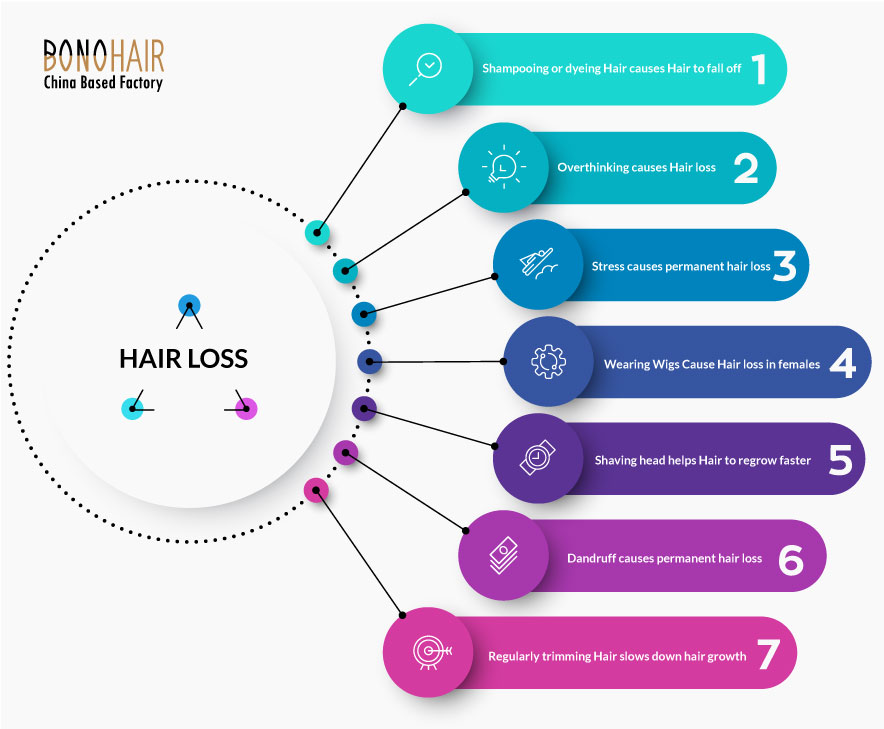
-
Myth #1: Shampooing or Dyeing Hair Causes Hair to Fall Off

Washing hair with shampoos or dyeing them does not cause hair loss. Instead, using the wrong products triggers hair loss. Sulfate-free shampoos and mild conditioners are gentle to hair follicles and scalp, hydrate hair and skin, and prevent them from irritation and dry-out. Coloring hair also does not initiate hair loss but using cheap dyes, or dyeing hair frequently can cause the hair to fall off.
-
Myth #2: Overthinking Causes Hair Loss
You may come across people who think hair fall is related to overthinking or even over-studying. No, mental exertion does not cause hair loss in females unless associated with an overall unhealthy lifestyle and malnutrition diet.
-
Myth #3: Stress Causes Permanent Hair Loss
Stress cannot cause permanent hair loss in females. It only slows down the process of hair growth as stress takes up a lot of mental and physical energy of a person. When the hair growth cycle stops or decreases, hair thinning may start to appear, which people confuse with permanent hair loss due to stress.
-
Myth #4: Wearing Wigs Cause Hair Loss in Females
Wigs or hair toppers are safe to wear even for longer spans. These hair systems do not cause any type of hair fall. Wearing wigs causes hair fall only in those who stop taking care of their scalp and natural hair, and do not maintain routine cleanliness underneath the wig.
-
Myth #5: Shaving the Head Helps Hair to Regrow Faster
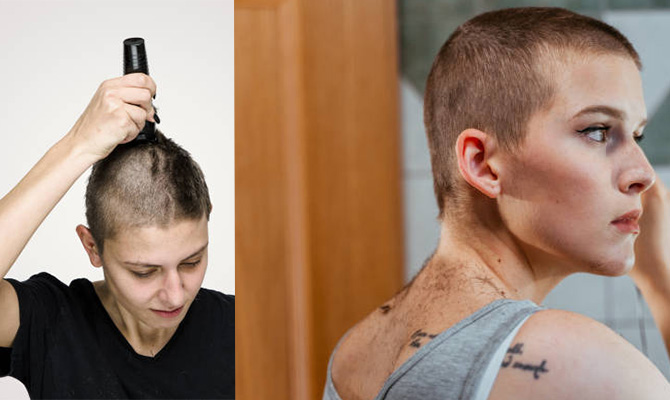
This is an absolute fabrication. Hair does not grow thicker or faster after shaving the head. New hair that appears after shaving feels thicker only because shaving causes the hair tips to become blunt, so when these blunt surfaces reappear as new hair, the head looks full of thick hair, but after some time, the hair returns to its regular pattern and thickness.
-
Myth #6: Dandruff Causes Permanent Hair Loss
Dandruff directly does not cause hair loss in females – let alone permanent hair loss. Dandruff causes the scalp to be dry or itchy, and when the sufferer scratches their head, it may cause hair follicles to get damaged or scarred, leading to hair loss. This hair loss is not permanent. Once the dandruff is treated, the hair fall stops and the hair grows back.
-
Myth #7: Regularly Trimming Hair Slows Down Hair Growth
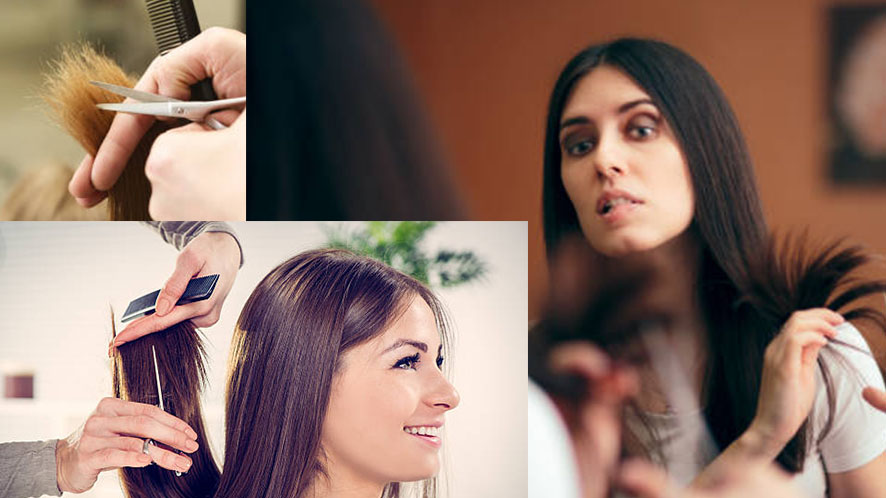
Trimming hair promotes hair growth by keeping the split ends at bay. Trimming has no link with increasing or decreasing the process of hair growth. It only makes the hair look healthy and well-maintained.
Does Hair Regrow After Falling Out?
Hair regrows after falling out on its own unless the hair loss is due to any condition that has caused irreversible damage to hair follicles.
Hair growth has a proper cycle that works in three phases. These are:
- The Anagen Phase
Anagen is the active growth phase of the hair follicle, and it lasts approximately two to eight years for each strand. Most of the hair follicles on a person’s head stay in the anagen phase.
- The Catagen Phase
After the anagen phase comes, the transition stage is called the catagen phase, during which the hair strand does not grow further.
- The Telogen Phase
Once the transition phase is over, the hair falls out, and now the hair follicle is said to be in the resting phase, also known as the telogen phase. After two to three months, the anagen phase for this hair follicle will start again, and the hair cycle will repeat itself.
This is how each follicle produces hair in the human body. Millions of hair follicles are in one of these phases, causing hair to fall off and regrow. This regular cycle may get interrupted due to external issues such as specific ailments, exposure to harmful chemicals, or stress, causing hair growth to slow down.
What Causes Hair Loss in Women?
Hair loss is diverse from genes to diet and lifestyle to physical or emotional fitness; hence, there is no one-line answer to this dilemma. What exactly causes hair loss in women cannot be pointed out directly; however, we can figure out the enemy earlier if we go through the possible contributing factors in detail.
11 Most Common Causes of Hair Loss
The eleven most common factors that contribute vastly to female hair loss are;
- Alopecia
- Dandruff
- Thyroid Problem
- Hormonal Issues
- Pregnancy / Post-Pregnancy Hair Loss
- Environmental Damage
- Excessive hair Styling
- Cancer / Chemotherapy
- Vitamin Deficiency
- Genetic Proneness
- Menopause
-
Alopecia
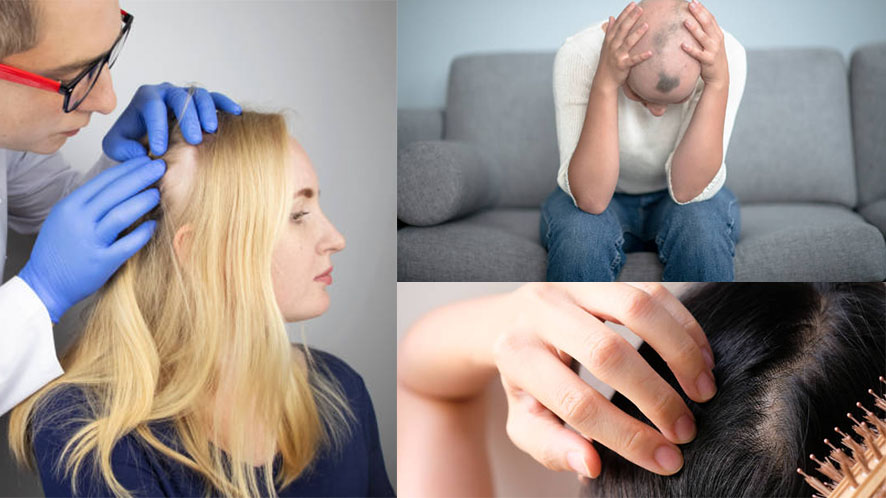
Alopecia areata is an auto-immune disease in which the body’s immune cells attack the white blood cells of hair follicles and engulf them, causing the normal hair growth cycle to slow down or stop in some cases. The intensity of alopecia differs significantly. Some people may experience only a quarter-size bald patch on the head, while others may lose complete body hair. On average, three to four bald patches appear on the head of sufferers.
Alopecia is an unpredictable disease that does not cure besides trying medicines or cosmetic treatments for hair regrowth. Sometimes the hair reappears automatically without any treatment in a person who has alopecia, but often it does not regrow.
This horrendous disease can attack anywhere at any time, and the root cause is still undiscovered. It is not a contagious disease but may have some kind of genetic proneness as a couple of sufferers have reported a family history of having alopecia areata.
The onset of alopecia is not limited to any age, race, or gender; however, in most cases, it develops before the age of 30.
-
Dandruff
Dandruff directly may not cause hair loss in females but can prove to be dangerous if left untreated. Dandruff may cause extreme itchiness and inflammation on the scalp, making the hair follicles prone to breakage.
Hair loss due to dandruff is not irreversible, and hair grows back once the condition is treated.
-
Thyroid Problem
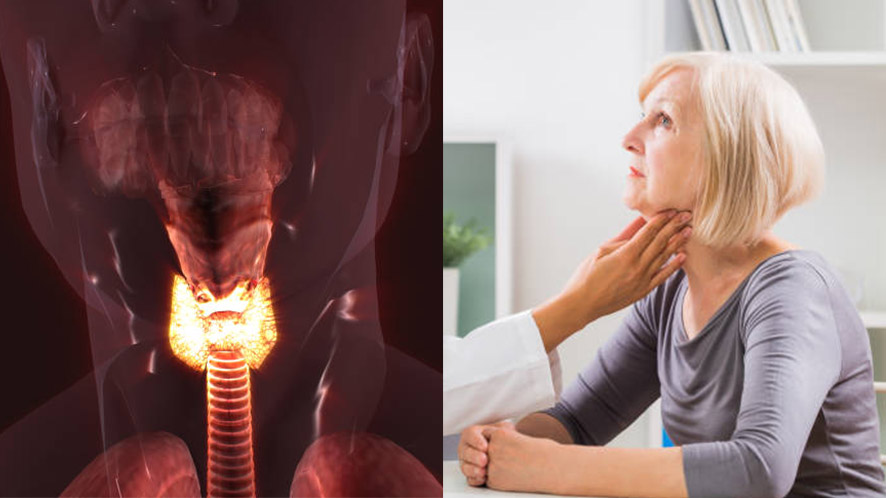
Hyperthyroidism or hypothyroidism causes hair loss in females. This particular disorder happens due to the imbalance of the Hormone Thyroxine and Thyroid-Stimulating Hormone (TSH), which affect the overall physical growth of the person.
Thyroid hair loss progresses slowly. A person may lose only 100 to 120 hair strands a day, which apparently seems normal. However, the hair does not regrow, and hair thinning starts to become observable. Thyroid hair loss is also reversible, but it cannot be stopped unless the person is cured of hypo or hyperthyroidism.
-
Hormonal Issues
Hormonal balance is an essential part of normal human growth. All bodily functions depend upon the regular flow of growth-stimulating hormones, and if the flow stops or gets disturbed, unwanted changes in the body start to appear. This disturbance can also cause hair loss.
Hormonal issues can happen due to multiple reasons. Emotional distress, shock, unhealthy diets, maladaptive lifestyles, smoking, drinking, irregular sleep cycles, anything can trigger the hormonal imbalance in the body, causing a shortage of growth hormone, which ultimately impacts hair follicles as well.
Hair keeps shedding on a regular basis, but new hair does not grow back as often, causing hair thinning.
-
Pregnancy / Post-Pregnancy Hair Loss
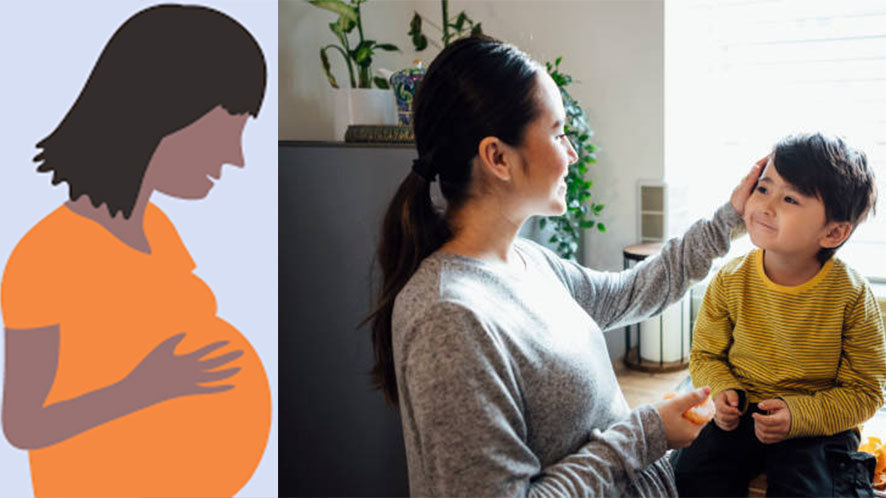
Pregnancy and postpartum are one of the most common reasons for hair loss in females. The rising level of Estrogen and Progesterone to support the fetus and prepare a female’s body for childbirth can cause hair loss.
Most women become iron deficient during pregnancy, which also leads to pregnancy hair loss. The growing fetus consumes iron from the mother’s body which depletes the hemoglobin level in females, causing hair loss and other health-related issues. The trauma of labor and delivery also triggers hair loss in some women.
Pregnancy and postpartum hair loss can be successfully treated with the help of a good diet, iron supplements, and emotional support.
Breastfeeding and not taking a proper diet during the postpartum period also cause hair loss in females. Most women treat themselves well during the three trimesters when the fetus is inside, but neglect their health once the baby is born. Pregnant women undermine the care they need during the fourth trimester, three months after the baby is born, and prioritize the infant’s needs over their own.
Lack of proper nourishment, lack of emotional support, and lack of sleep can lead to hair loss in females during the postpartum period.
-
Environmental Damage
Women wear sunscreen to protect their faces and bodies from the sun’s harmful rays but often underestimate the damage these UV rays cause to hair. Frequent exposure to sun rays can set off hair fall through the effect is temporary, and hair starts to regrow without any medication once the exposure to the sun is dealt with.
Dust particles and debris from the environment also accumulate on the scalp, causing hair follicle malfunction. Routine scalp care is mandatory to avoid this kind of hair loss in females.
Extreme weathers also affect hair and scalp, so women who live in harsh climates are more prone to hair loss. Winters dry out the scalp causing the hair to be rough and prone to damage while sweating in summers accumulates debris on the scalp and may lead to inflammation or fungal infection.
-
Excessive Hair Styling
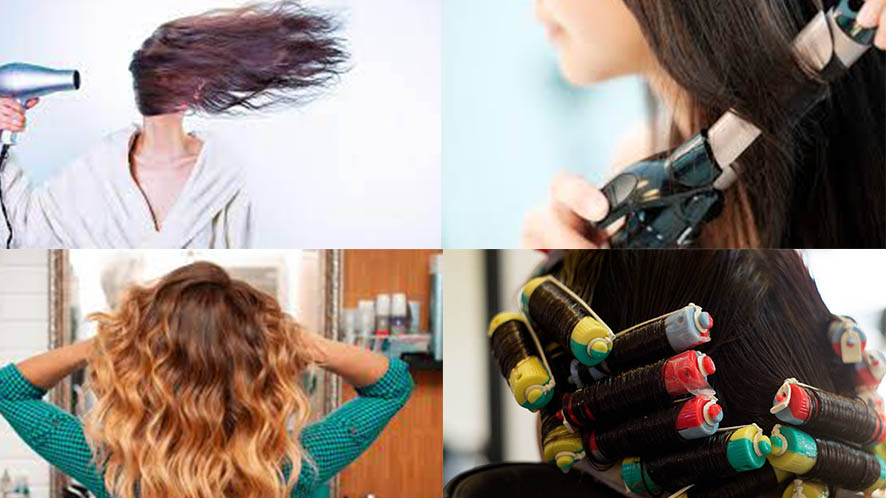
Frequent use of curling iron, heating tongs, and other styling tools can damage the hair strands. Excessive hair styling severely damages hair fibers, causing the hair to break off easily and changing the appearance of hair strands. Shiny and glossy hair starts to look dull within days, and the smooth texture of the hair becomes rough.
Pulling off hair tightly to make hairstyles also causes breakage and hair loss in females. In order to maintain good hair, it is suggested to use hair protectant sprays before styling hair with heating tools, and gentle hair styling should be carried out to stop hair fall.
Using hair styling products like hair gels, setting sprays, or other styling sprays can also damage the hair follicles and interfere with the normal hair growth cycle.
Overwashing the hair after hair styling can cause the scalp to dry out, which leads to hair thinning.
-
Cancer / Chemotherapy
Radioactive rays and chemotherapy attack the healthy cells and immune cells of the body. Hair follicles also get damaged during chemotherapy, and hair starts to fall off. Many cancer patients shave their heads before undergoing the painful process of chemotherapy.
Hair loss due to chemotherapy or cancer usually is not permanent. Usually, it takes a year to grow back hair after radiation therapy. The emotional distress during chemotherapy and cancer also aids in hair loss. Medications for hair regrowth are not recommended during cancer treatment, so the patients are recommended to use hair systems like wigs or hair toppers.
-
Vitamin Deficiency
Even women born with good hair or have genetically beautiful hair need to maintain hair health with the help of proper diet and supplements. Otherwise, this gift of nature would not wait for long. Women who do not take supplements and ignore the vitamin or mineral levels in their bodies soon suffer from hair loss.
Hair loss due to vitamin deficiency is slow to progress, but hair thinning may become very prominent before the culprit gets caught red-handed. Women should keep a consistent check on their vitamin levels and take healthy diets if they want to enjoy good hair days more often.
Vitamin A, iron, and vitamin B (biotin) are essential for hair regrowth. Zinc supplements also help in restoring the natural shine and thickness of hair.
-
Genetic Proneness
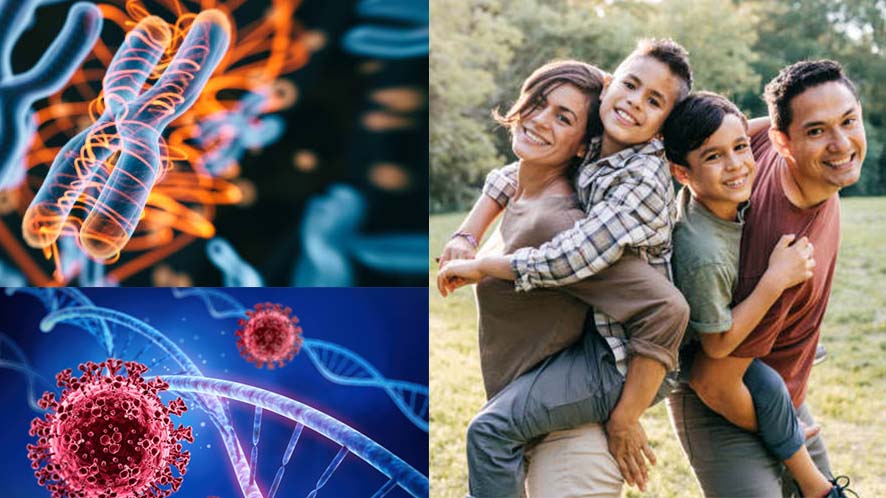
Most women who lost hair or developed balding reported having a family history of balding or hair thinning. Genetics plays a vital role in deciding a person’s overall physical health and appearance; thus, proneness to hair loss can also be transferred via genes.
Genetic baldness in most cases appears after the age of 40 with a slow and gradual onset. This type of hair loss can be permanent. In most cases, people who suffer from genetic hair loss seek help from wigs and hair replacement.
-
Menopause
The estrogen level in a female body starts to deplete, which triggers hair loss or hair thinning in females. This type of hair loss can also be referred to as hair loss in females due to aging. Menopause also creates a hormonal imbalance in the female’s body, disturbing normal physical function and growth cycles.
The levels of Estrogen and Progesterone during menopause deteriorate rapidly. These hormones are responsible for hair growth and stay on the head; thus, their depletion affects hair’s natural growth cycle in women. The hair strands fall off as they used to, but new hair does not grow back at the same speed causing the hair to look thin.
Types of Hair Loss in Women
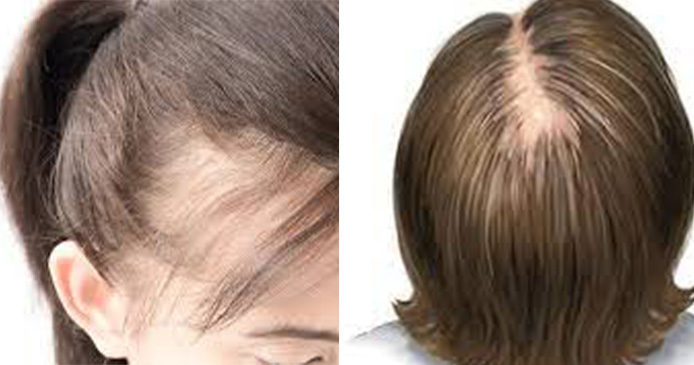
Hair loss in women has a varied pattern. According to the onset and progression, it has four common types:
-
Gradual Hair Thinning
Gradual hair thinning is the most common type of hair loss. The hair does not shed in clumps, and the person keeps losing routine 100 to 120 strands a day; however, the hair does not grow back at the same speed, causing the scalp to be visible in a couple of months.
Gradual hair thinning is related to hair loss due to stress, environmental hair damage, over-exposure to harsh chemicals or UV rays, or deficiency of vital minerals and vitamins in the body.
-
Sudden Onset of Hair Fall
This type of hair loss happens due to any medical condition such as cancer, chemotherapy, or scalp psoriasis. The person starts losing a huge clump of hair daily. In the shower, while brushing, on the pillow, there are substantial hair tufts everywhere. Anxiety provokes sudden hair loss as well.
Sudden onset of hair fall is usually hard to treat, and women may take help from hair toppers or wigs in order to cover the hair loss. This type of hair loss in medical terms is also known as telogen effluvium, where a large number of hair follicles reach the telogen phase causing the hair to fall off.
-
Progressive Hair Loss in Women
The hair loss keeps developing gradually and does not seem to stop no matter what. Alopecia falls into this category. During this type of hair loss, it becomes hard for the physician to rule out the actual cause of hair loss, and the balding keeps progressing. Sometimes it stops automatically after a certain period.
-
Advanced Hair Loss in Women
If the progressive hair loss does not stop, it develops into the advanced form of hair loss in which the woman loses a great bunch of hair, and a large portion of her scalp, mainly on the crown, becomes visible. This type of hair loss is common due to aging, menopause, medical illnesses, or fungal infections.
Female Hair Loss Treatment
While there are several treatment options available for hair loss in females, the success of every treatment depends upon the intensity of hair loss and how quickly the diagnosis was made. Even gradual hair thinning can be converted into advanced hair loss due to negligence. Similarly, the rapid hair loss onset can be reversed with proper care and immediate medical intervention.
The available treatments for hair loss in females can be classified into three major types:
- Topical Treatments for Hair Loss in Women
- Invasive Treatments for Hair Loss in Women
- Medical Treatments for Hair Loss in Women
Topical Treatments for Hair Loss in Women
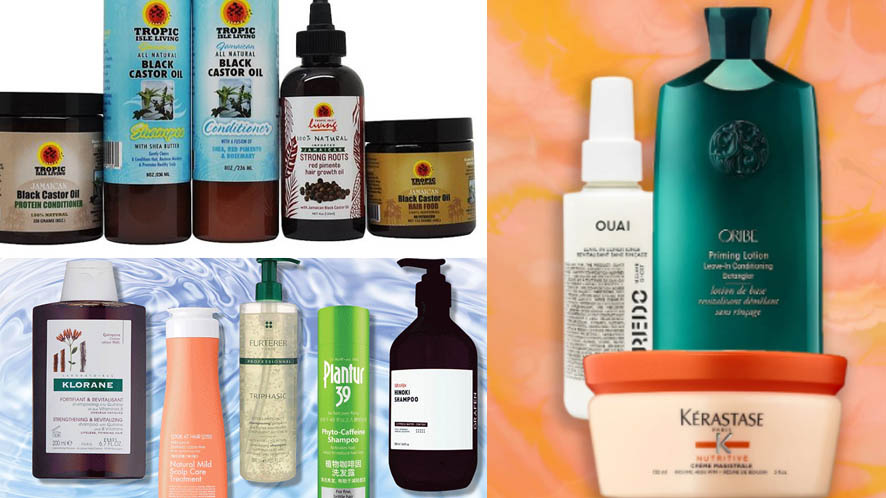
-
Anti-Hair Fall Shampoo
Anti-hair fall shampoo helps in hair strength. These shampoos have an excellent success rate in preventing seasonal hair breakage in females due to harsh weather.
Shampoos made explicitly for color-treated hair also prevent hair loss after dyeing hair and help restore hair texture that is lost due to chemicals and bleaches used during the dyeing process.
Anti-dandruff shampoos also help prevent hair loss that happens due to the accumulation of dandruff on the scalp. These shampoos soothe the inflamed scalp and help with itching. Regular use of such shampoos, however, is linked to scalp dryness. Therefore, it is suggested to use them in moderation.
Medicated scalp lotions with ketoconazole also help combat hair loss by clearing out fungal infections from the scalp.
-
Leave-In Conditioners
While conditioners alone cannot restore hair growth, using conditioners regularly can prevent hair loss up to a great extent. Conditioners provide the required amount of nourishment to the scalp and hair and prevent scalp dryness. The hair texture also improves by regular use of leave-in conditioners as it helps maintain the scalp’s normal pH.
For women who are busy and do not have time to perform lengthy shower rituals, leave-in hair conditioners work best because they do not require washing after application. Just apply the conditioner after coming out of the shower and leave your hair to air dry. It does not leave hair greasy, unlike oil, and provides ample nourishment.
-
Hair Regrowth Serums
Essential oils have proven successful in combating hair loss. Lavender and eucalyptus oil successfully treat scalp itchiness and inflammation, and frankincense oil helps keep dandruff at bay. Various other oils like lemon oil, neroli oil, neem oil, rosehip oil, argan oil, and morocco oil replenish the hair elasticity, preventing breakage and hair fall.
Hair serums are traditionally made by combining essential oils with a carrier oil. One can select the carrier oil according to preference. Coconut oil, avocado oil, argan oil, and jojoba oil are perfect carrier oils for hair loss and hair thinning. Castor oil works too, but it is relatively thicker and harder to remove from hair.
-
Protein Hair Food
Protein treatments at the salon help restore hair health and strengthen hair fibers to prevent breakage. Protein packs can be prepared at home as well by combining egg whites with avocado oil and olive oil.
Other homemade and organic protein hair foods are also available in the market to help women fight against hair loss.
Invasive Treatments for Hair Loss in Women
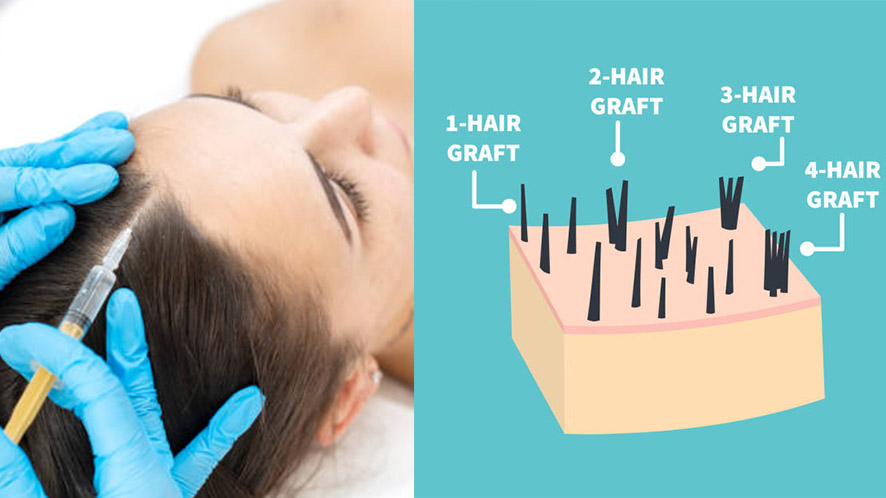
-
Hair PRP
PRP (Platelet-rich plasma) therapy is a well-known method used to treat hair loss in females. It is used in cases where hair follicles are believed to lack an adequate amount of oxygen. The process involves drawing blood from the arm, separating the platelet-rich plasma from the blood, and injecting this plasma into the hair follicles.
The plasma stimulates the hair follicles, which leads to hair regrowth. PRP has proved to be successful in most cases; however, it does not work for some women, and the cause is still unknown. Usually, women who are heavy smokers, or have a maladjusted lifestyle that lacks proper sleep and diet, may not be able to benefit from this procedure.
PRP does not guarantee hair regrowth though it is a typical process to regrow hair or increase hair volume.
-
Mesotherapy Injections
Hair solutions packed with necessary hormones, vitamins, and minerals are injected into hair follicles in order to stimulate hair growth. The direct injections increase the chance of absorption of the nutrient mixtures, which in turn leads to faster hair growth and reduced hair loss.
Mesotherapy injections help to combat hair thinning, however, these injections may not prove to be fruitful in the case of alopecia or genetic balding. These injections work better in cases where hair loss happens due to dietary insufficiency.
When the body lacks the required amount of calcium, iron, and protein, the hair growth cycles either stop or die down, causing the hair to fall off. Mesotherapy injections boost hair growth cycles by providing direct nourishment and food to hair follicles.
-
Permanent Hair Insertion / Hair Transplant
Synthetic hair is inserted into the scalp via minor invasive surgery. It is like wearing a wig that one does not have to remove ever. Synthetic hair mimics natural hair perfectly, giving the illusion of having a head full of hair to others; however, this hair does not grow further and stays of the same length.
Cosmetologists suggest this type of hair therapy to those subjected to permanent hair loss or genetic balding.
-
Laser Surgery
Laser beams have been utilized to stimulate hair follicles, leading to hair regrowth; however, this process also does not guarantee hair regrowth. Laser surgery is relatively expensive and time-consuming. Frequent sessions are required to replenish hair growth. However, the overall process is more tolerable and less invasive than hair transplant surgery.
The infra-red laser beams allow the scalp to absorb photons, causing the hair follicles to come out of the telogen phase and regrow natural hair. Dead hair follicles may be revived through this process.
Medical Treatments for Hair Loss in Women
-
Medicated Spray
Minoxidil (Rogaine) is an approved drug by the FDA to topically treat hair loss or baldness in females. It is a medicated spray that one needs to apply daily for at least a year to achieve desirable results. Minoxidil is prescribed vastly by dermatologists for female hair loss. It shows faster results if it starts earlier and within six months; the person may notice rapid hair growth.
It can be used to combat hair thinning in the initial stages as well. Minoxidil is relatively safer to use as an over-the-counter medicine; however, it is always better to consult a physician before applying anything that has medicinal properties to avoid possible side effects.
Prolonged use of Minoxidil may cause dryness, itching, or redness on the scalp, especially in women who have a sensitive scalp.
-
Oral Medications for Hair Regrowth
Finasteride and Dutasteride are two widely used medicines for treating hair loss or baldness. These medications are also FDA-approved. Pregnant women cannot use these drugs because of the possible risks of congenital disabilities associated with normal fetal development.
Homeopathic medicines such as Arnica Montana, Silicea, Thuja Occidentalis, and Sebal Serrulata are also popular to treat hair loss in women. However, no drug should be taken without the prescription of a healthcare expert.
Hair vitamins and supplements are also widely used to help hair loss relief in females. These vitamins are also FDA-approved and can be used without prescription. Supplements, however, do not help restore hair loss caused by medical conditions, alopecia, or radioactive therapies. Regular consumption of supplements can help prevent nutritional deficiency and hair loss.
Female Hair Loss Solutions
Cosmetic hair surgeries are not suitable for everyone, and investing in these surgeries does not even guarantee hair regrowth. While these surgeries can cost a fortune, prolonged use of drugs for hair regrowth can affect the overall physical health of a person and may damage the liver, kidneys, and stomach in the long run.
A relatively safer and affordable option to show off a head full of hair is to use hair toppers, extensions, or wigs. These hair systems look natural and provide a low-key hair replacement option. One can always replace these hair systems, unlike permanent hair transplants.
Widely used hair systems for female hair loss are;
Hair Extensions
Clip-in hair extensions provide a temporary solution to cover hair thinning. Synthetic or human hair strands are attached with hair clips; one can easily clip these extensions under the natural hair, especially around areas where hair thinning is more prominent.
Hair extensions work better in case hair loss or thinning is less noticeable, i.e. no obvious bald spots. Extensions provide maximum volume to the hair. These are available in many colors, sizes, and textures, so it is not hard for women to find their perfect match.
High-quality human hair extensions are highly recommended, as the extension hair blends perfectly with wearers’ bio hair. Synthetic hair extensions are easy to fray and tangle, and the unnatural shiness from fibers makes the extensions obvious to other people. Hair extensions can be worn with or without hair thinning in order to increase hair length and volume.
Hair Toppers
Hair toppers work best in the stages of hair loss when the hair thinning or balding is only partial and appears primarily on the crown. These toppers usually provide partial coverage at the crown part and hair wigs that provide full coverage are also available. Compared to full wigs, hair toppers are relatively economical choices for early-stage hair loss.
One can wear the hair topper all day long, but it is recommended to remove the topper while sleeping as sleeping on it may cause the hair strands to tangle and break off. Synthetic hair toppers and human hair toppers both are widely available. Human hair toppers require care that one needs to give to natural hair as well. Synthetic hair toppers, on the other hand, are low maintenance as they cannot be restyled and are prone to heat and frizz.
It is best to order a hair topper after considering head size, the intensity of hair loss, and hair color. If the color matches perfectly, the hair topper blends with natural hair and creates a voluminous hair look.
Hair extensions are readily available in different colors to play around. They serve cosmetic purposes more than hiding hair loss in females. For hair loss, toppers and wigs are more common.
Hair Wigs
Hair wigs have been in the industry for ages. People use wigs to cover hair loss or balding or to change their overall outlook. Wigs provide a chance to try out different looks without having to cut or dye natural hair.
Traditional hair wigs used to look fake due to unnatural hairline, but modern hair wigs that are hand-tied to lace front base or skin base provide a realistic-looking solution to hide hair loss in females. Considering the social stigma attached to hair loss in women, natural-looking hair wigs allow women to cover hair loss perfectly. Compared to invasive or cosmetic hair surgeries, hair wigs also provide an alternative to hair loss that guarantees the results.
Synthetic or Human hair are both widely used in constructing hair wigs. Human hair wigs look more natural, and it is not easy for other people to find out if someone is wearing fake hair with human hair wigs. These wigs allow women to wear their hair with confidence.
Synthetic hair wigs are more affordable. These wigs are often pre-styled and do not lose their texture even after frequent washes. However, unlike websites claim, synthetic wigs do need to be taken good care of to stay smooth and shiny.
Human hair wigs can be styled with heat-styling tools. Women can easily pull off different hairstyles with the help of wigs. However, to prolong the life span of the wig, it is ideal to reduce hair tool use. Using hair protectant sprays before exposing the wigs to curling irons or heating tools is recommended.
Conclusion
As they say, “Hair does not make a woman, but good hair definitely helps”, and we could not agree more.
Every woman wants to have good hair and to be honest, and we deserve this happiness. Having voluminous curls, lustrous locks, messy buns, or glossy, sleek ponytails is a dream of every other woman, but hair thinning or hair loss shatters this dream to pieces for millions of women out there.
Even though hair loss has several causes, not each type of hair loss is permanent, and one can quickly regrow hair back provided the proper care and immediate action.
Investing in hair care, seeking help from professionals as soon as noticing hair loss, and using the right products help restore hair and scalp health.
Several hair loss solutions are available in case of permanent hair loss due to any health condition or genetic balding. From laser hair therapy to hair PRPs- cosmetic hair surgeries have proven successful in giving a head full of hair again. However, these surgeries are quite expensive, and results are not guaranteed.
For instant hair loss solutions, it is recommended to use hair systems like hair extensions, toppers, or wigs that help one hide the hair loss perfectly and provide an easy way out to get a set of gorgeous hair.
Always purchase high-quality human hair toppers or wigs for the most natural result and enjoyable happy experience. Infuse it with the love and care it deserves, and the effort will definitely pay off.











